The Monasteries at Meteora are located in the Thessaly Region of Greece near the town of Kalabaka. Most of the monasteries were built during the Middle Ages and are perched on the peaks of towering sandstone pillars. The Greek word for meteora means “suspended in the air” and the term appropriately describes these Greek Orthodox monasteries that are setting on top of the tallest peaks in the area.
Six of the original 24 complexes are still functioning monasteries with resident clergy and are open for visitors. Out of the six active monasteries, two (St. Stephen and Rousanou) are convents with nuns and the other four are male monasteries with monks.
Holy Monastery of Great Meteoron
This is the oldest and largest of the Meteora monasteries. It was built in the mid-14th century and is located more than 615 meters (2,000 ft.) above the valley floor which also makes it the highest of the monasteries. Visitors need to climb more than 300 steps to enter the monastery but it is worth it as it is considered the most prestigious of the monasteries.
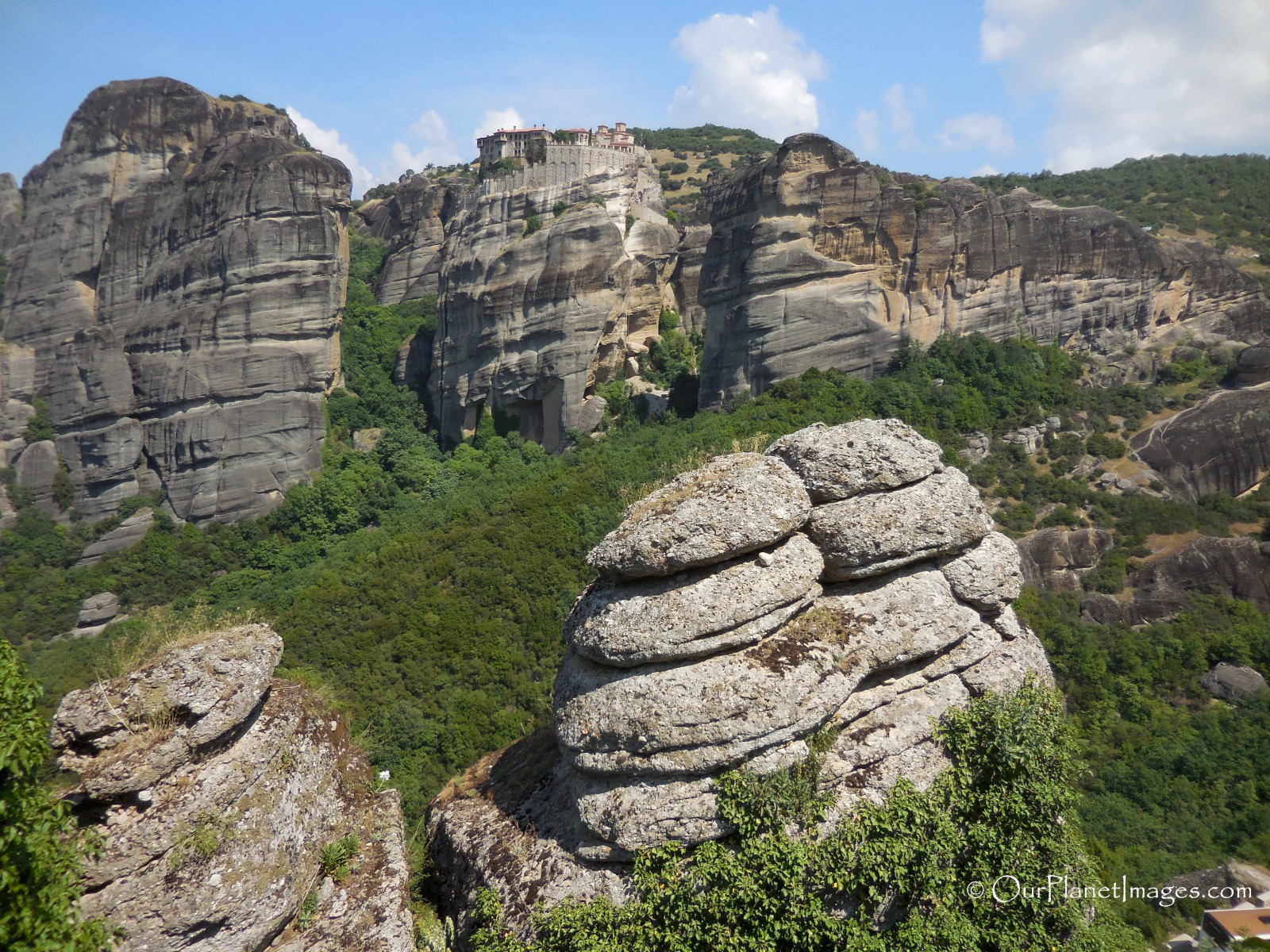
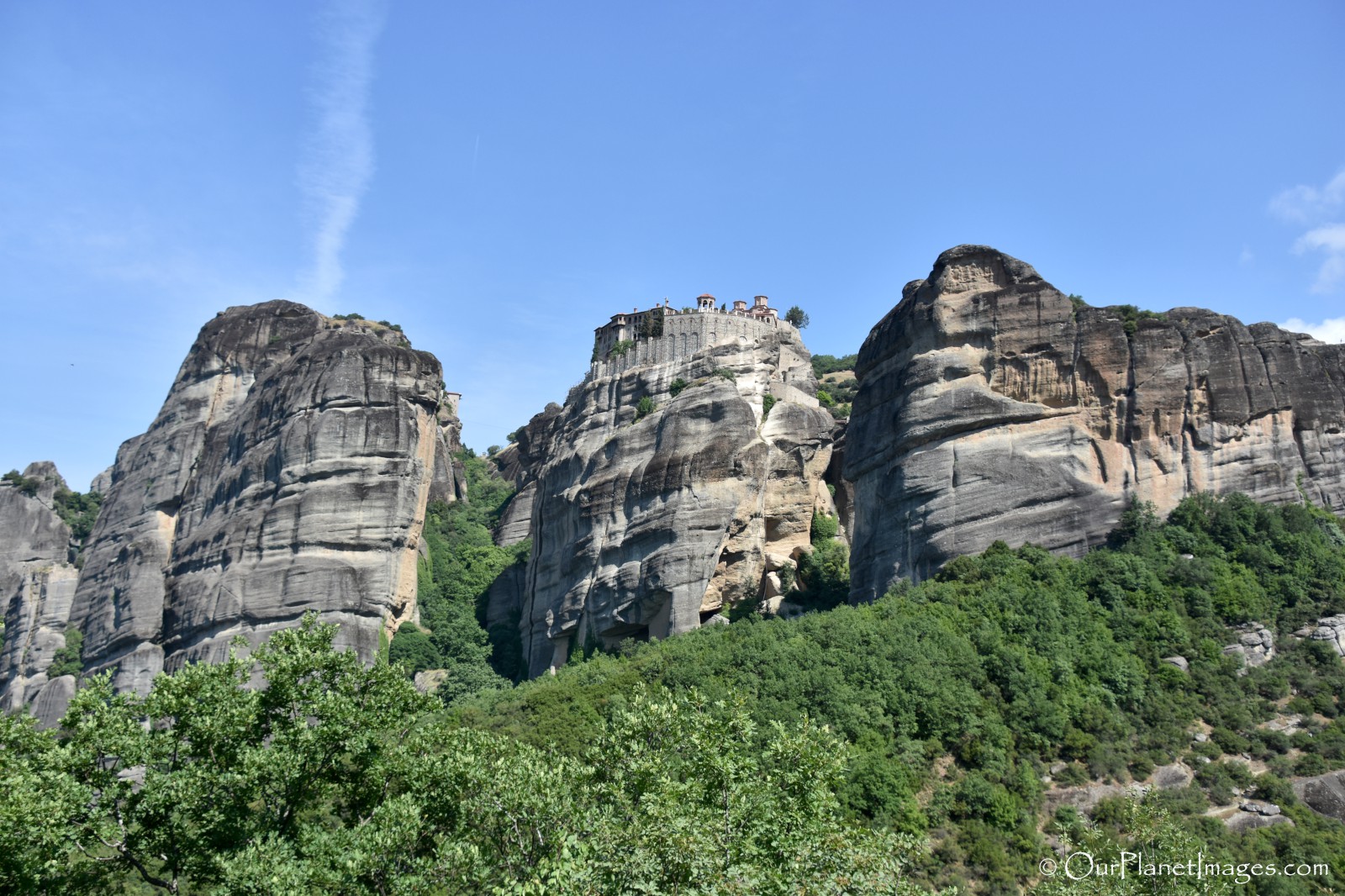
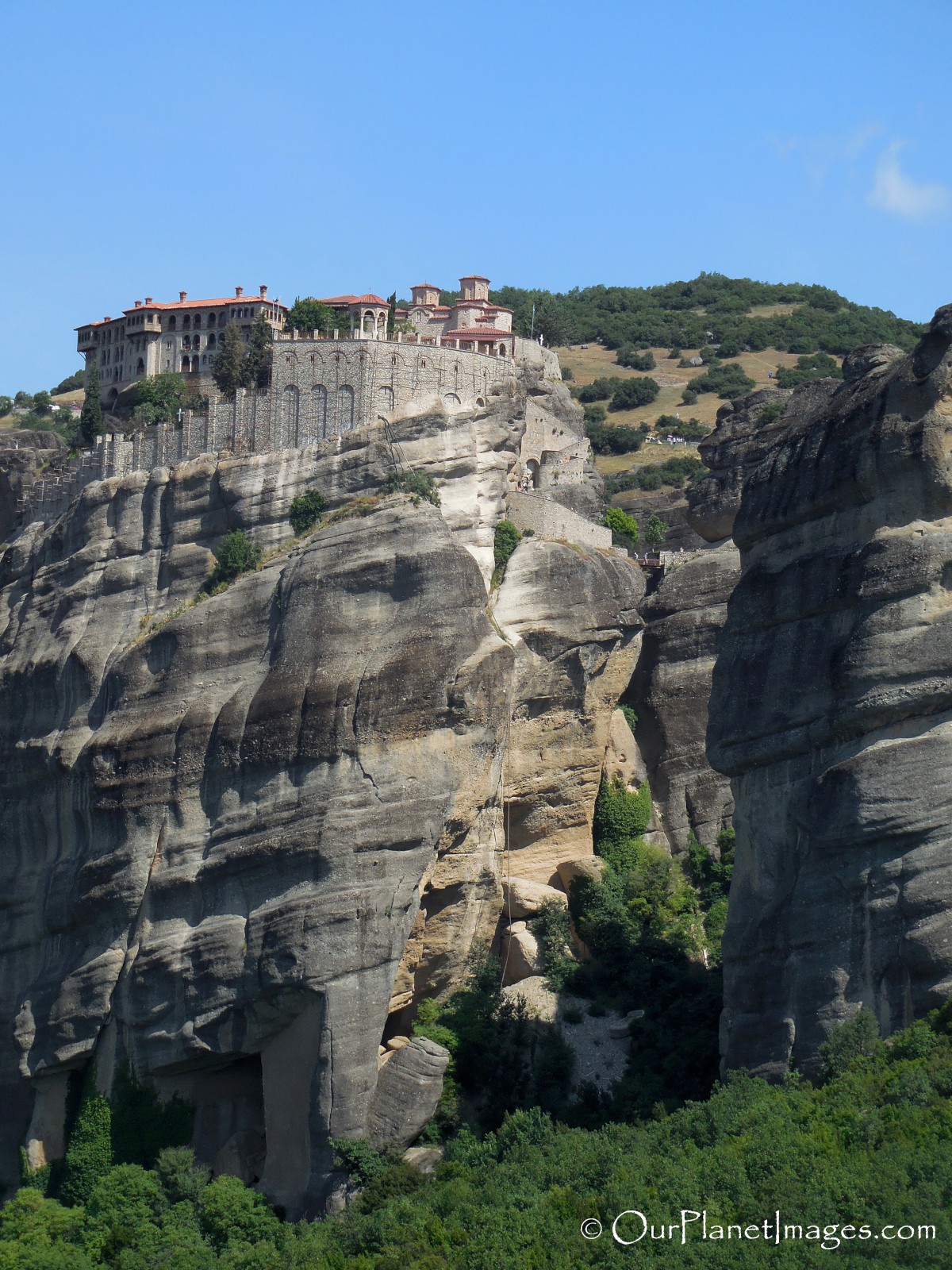
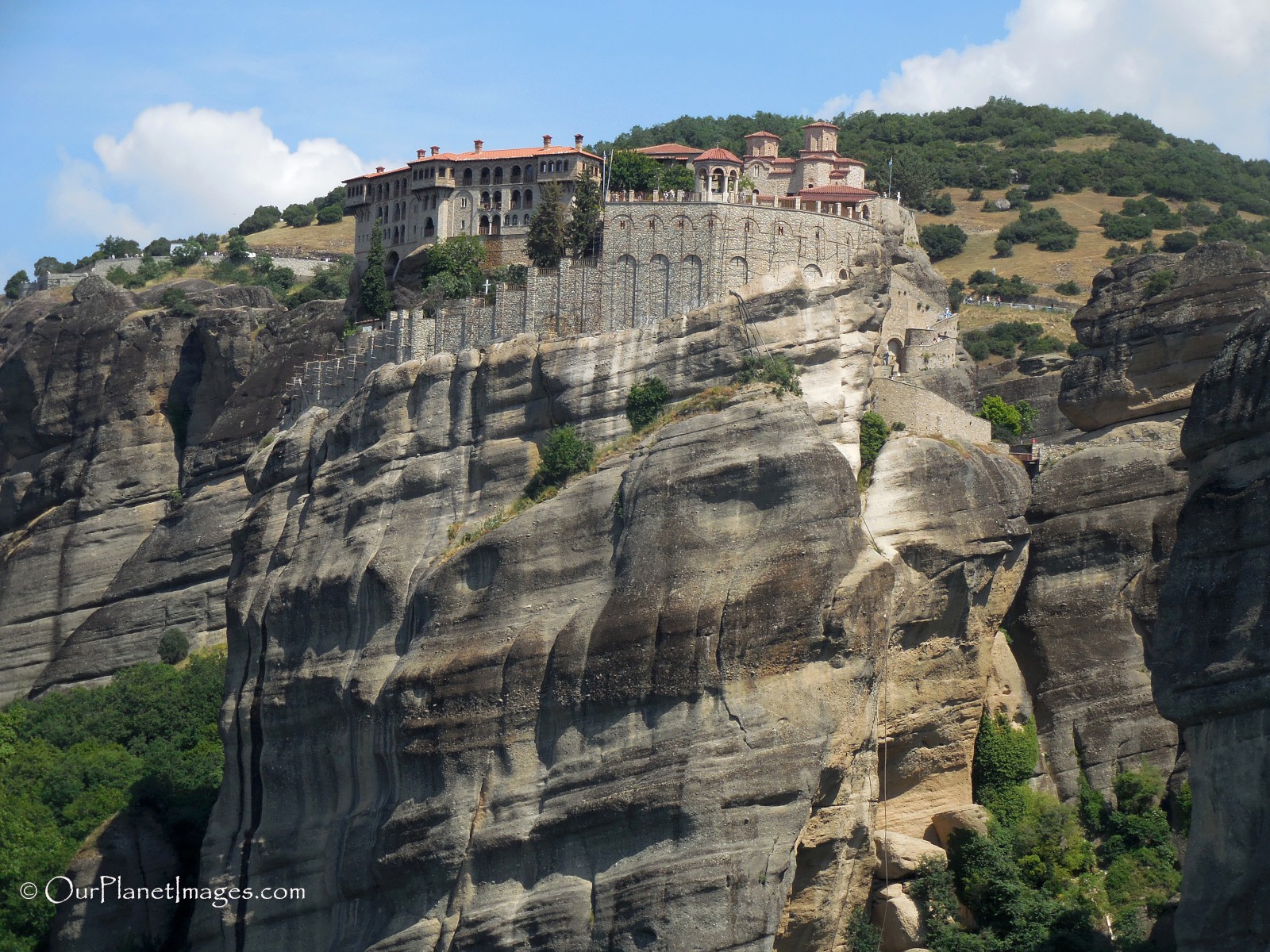

Holy Monastery of St Nicholas Anapausas
This relatively small monastery is often overlooked by tours of the monasteries but it has some of the finest frescoes in Meteora which illustrate Biblical scenes and monastic life in the 16th century. From the base of the peak there are 150 steps leading to the monastery entrance.
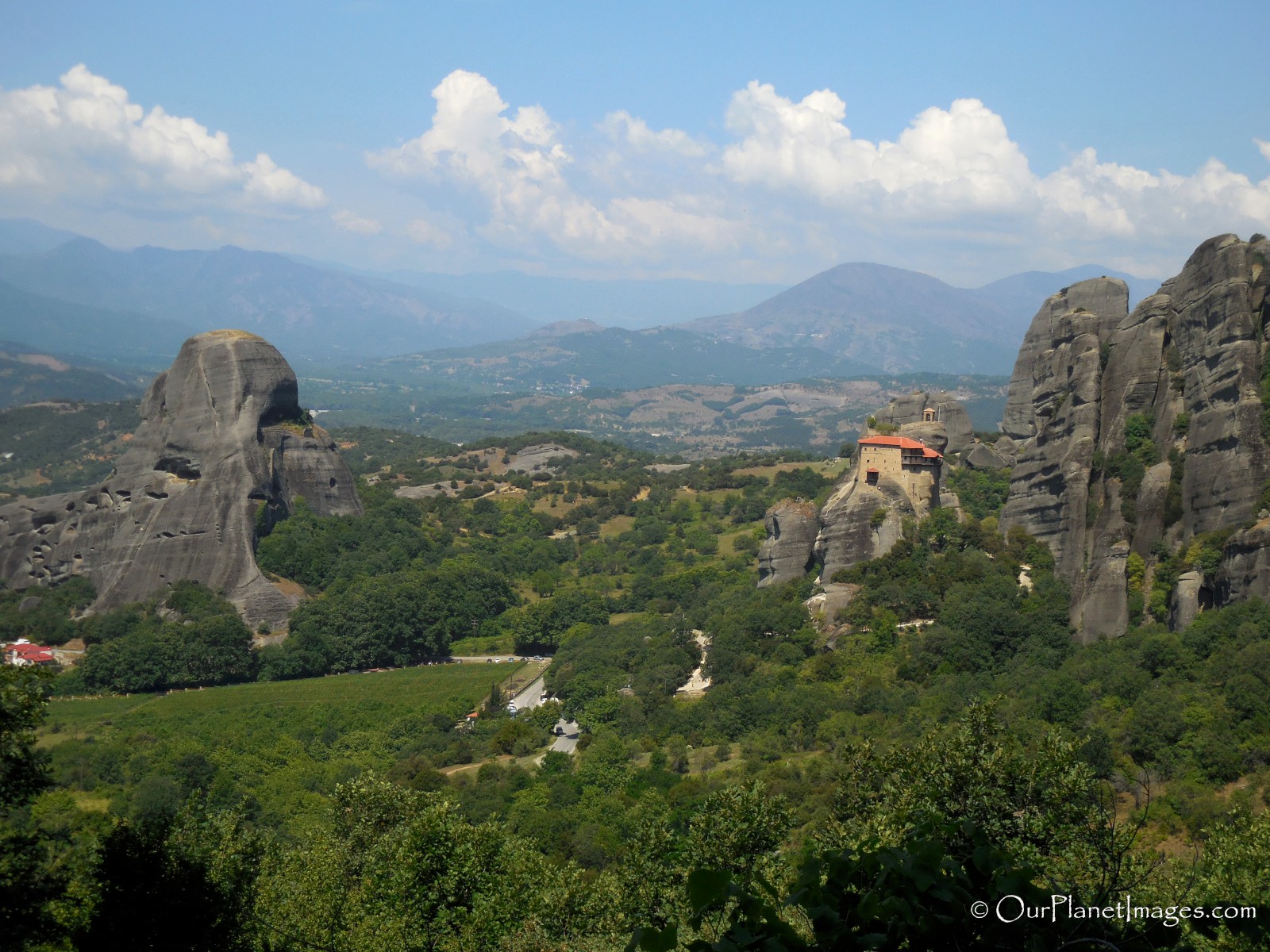
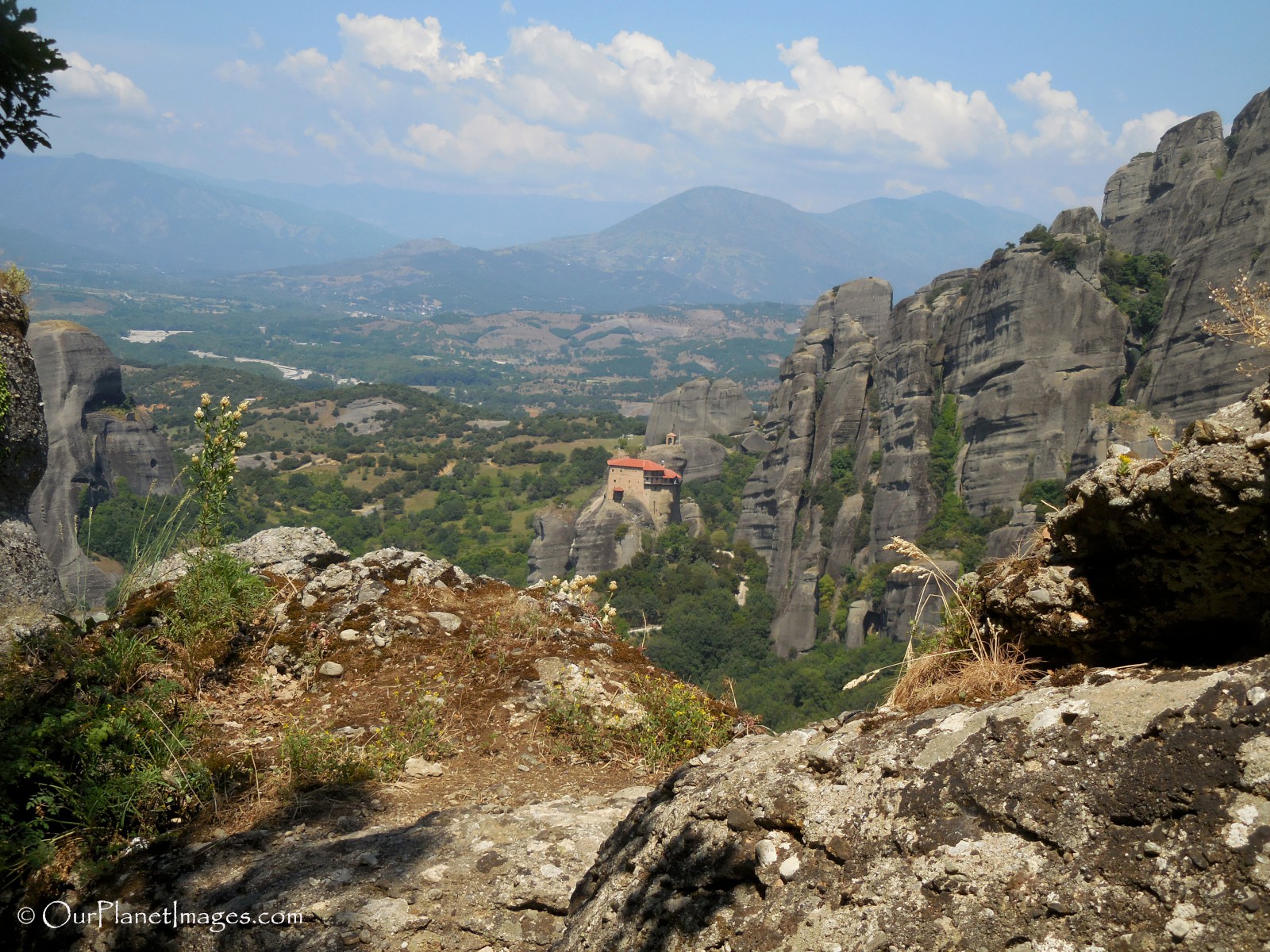
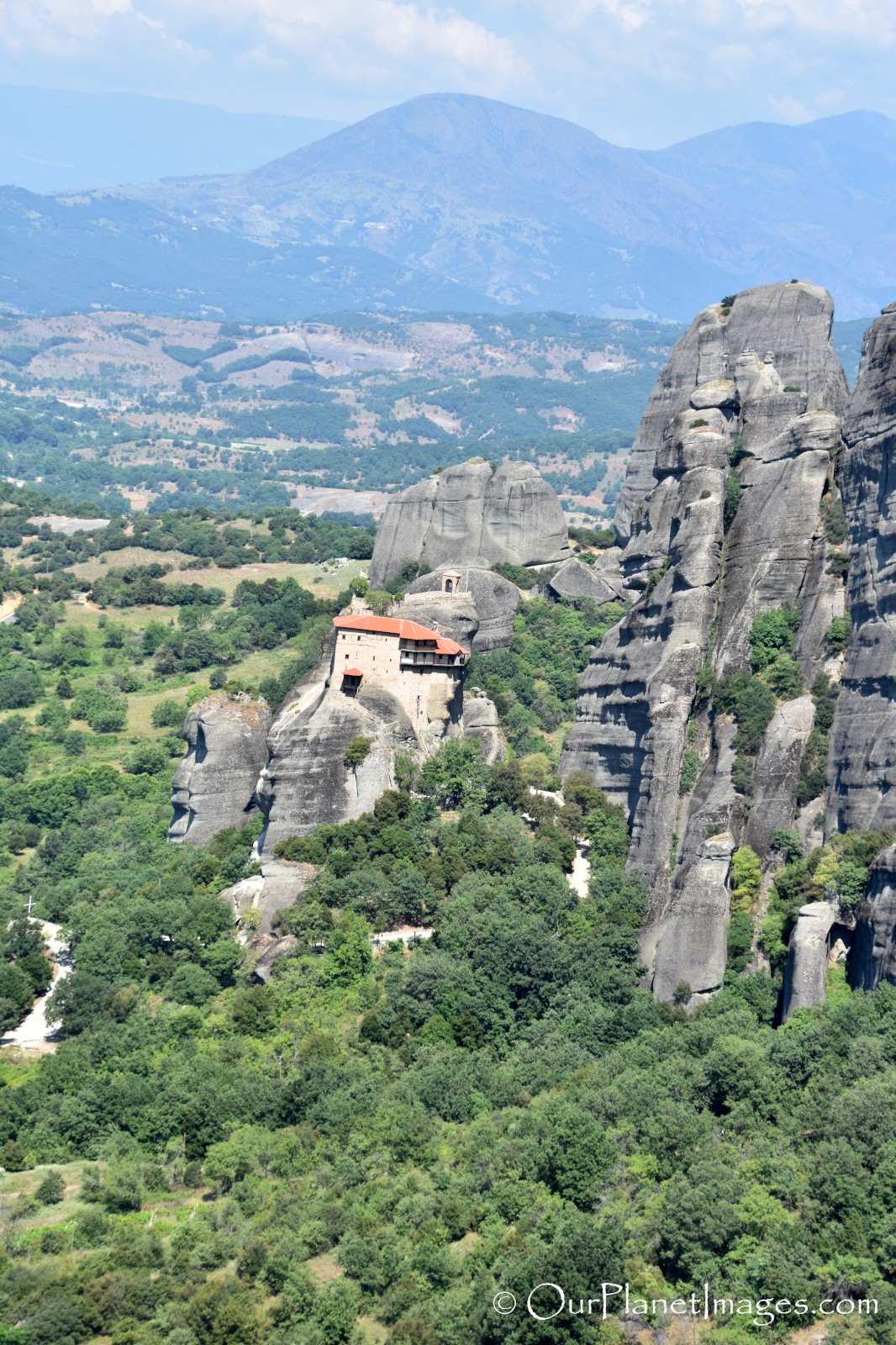
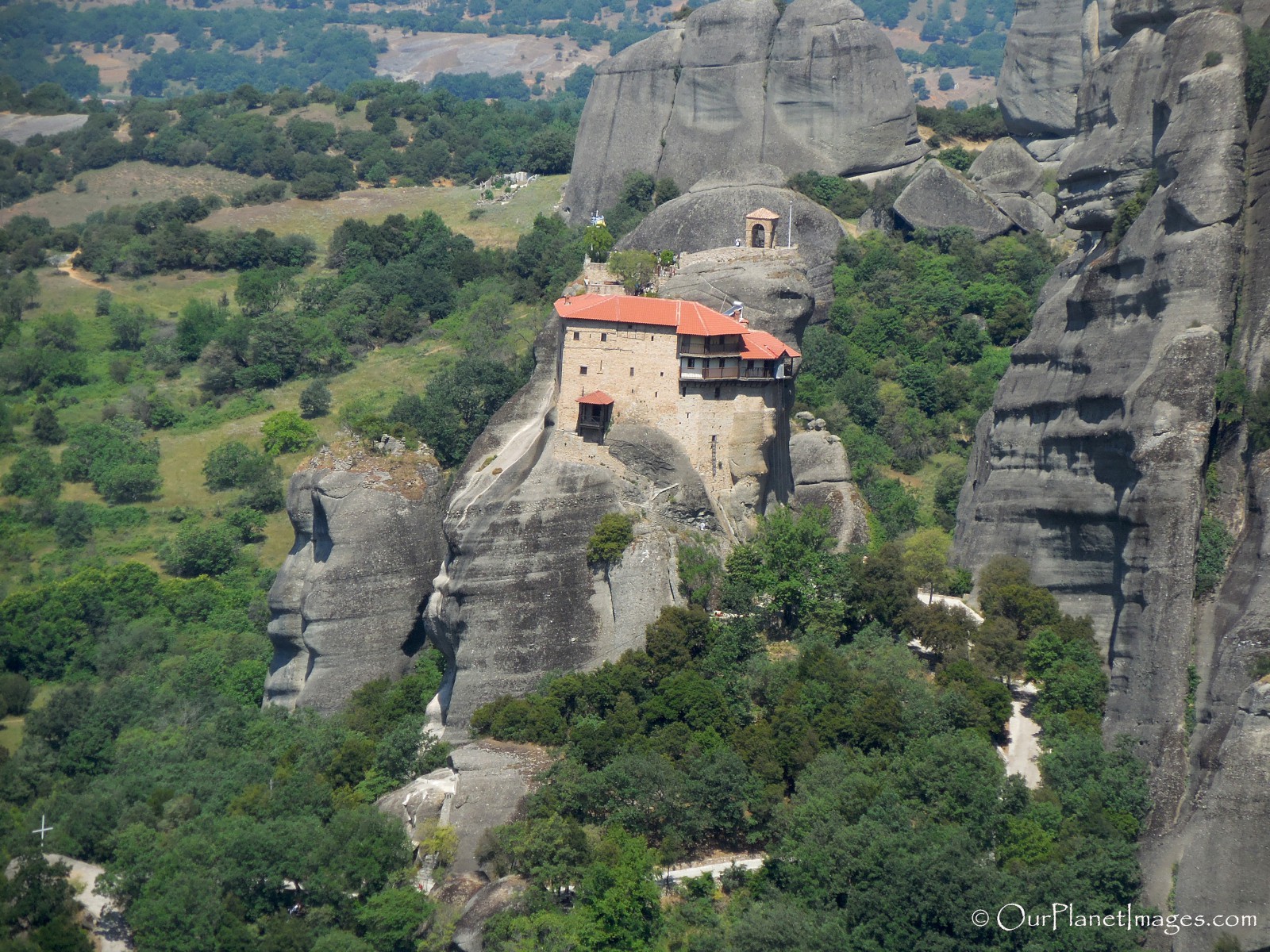
Holy Monastery of St. Stephen
This monastery was built in the 1500s and is the only monastery that is visible from the town of Kalabaka. It was bombed in World War II by the Germans and most of the frescoes were damaged in the Greek Civil War that ended in 1949. It remained abandoned until 1961 when it became a nunnery.
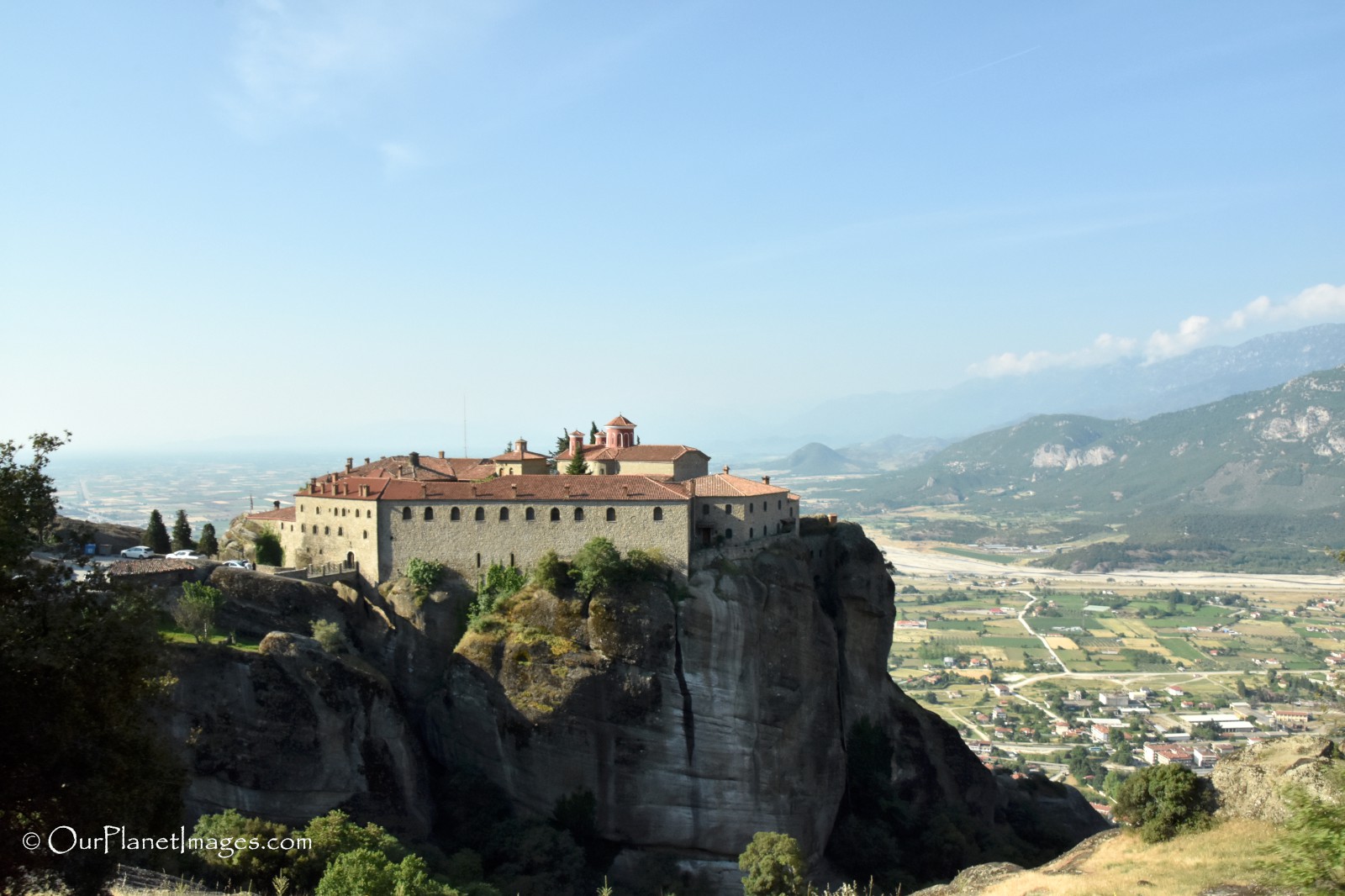
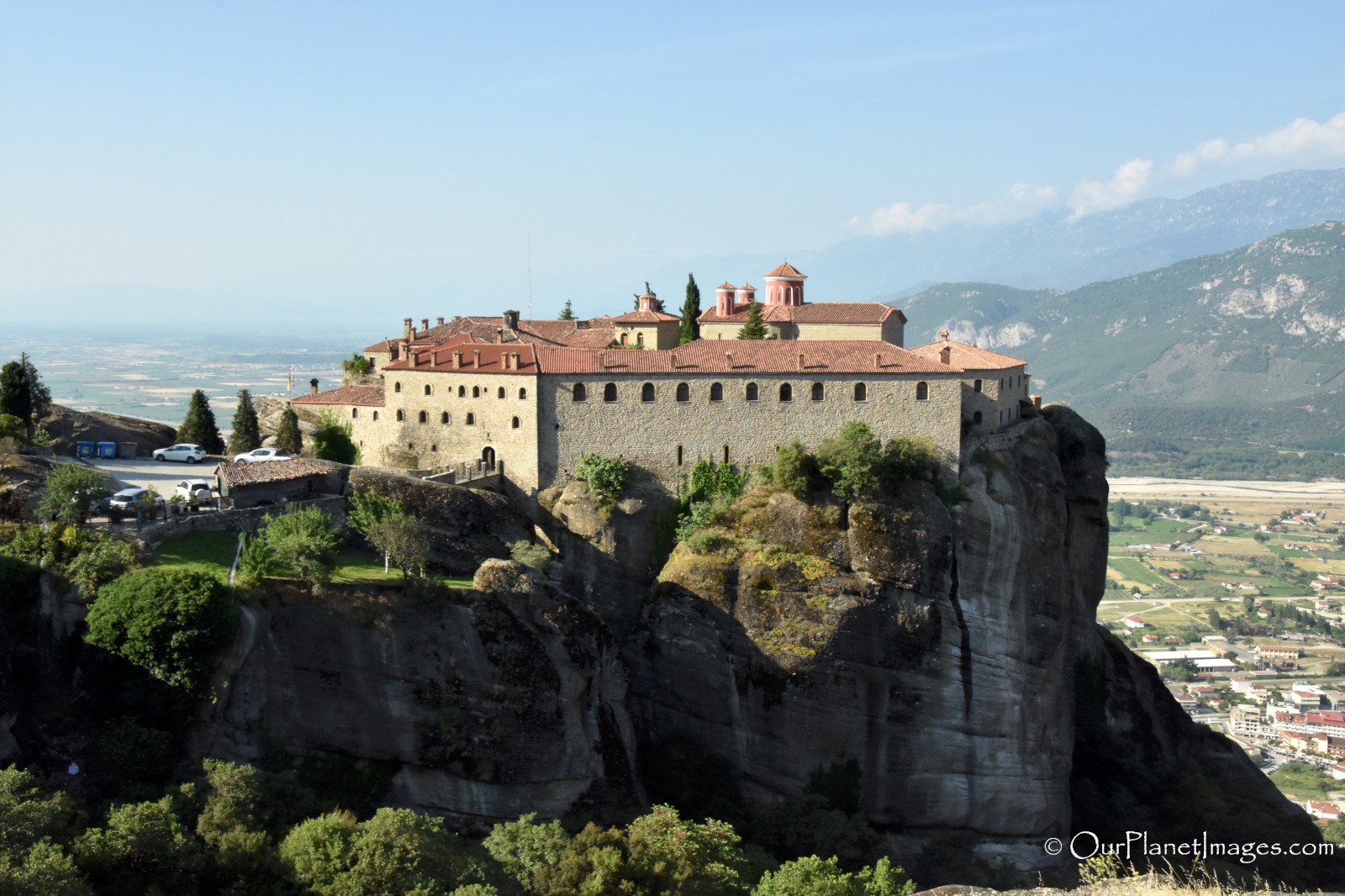
Holy Monastery of Varlaam
This monastery was built in 1541 and is the second largest of the Meteora monasteries. It took 22 years to bring all of the building supplies to the summit which was done with a rope basket and hoisted to the receiving platform. Visitors to the monastery were also hoisted in the same basket until the 20th century when 195 steps were carved into the cliff face allowing visitors to reach the summit.

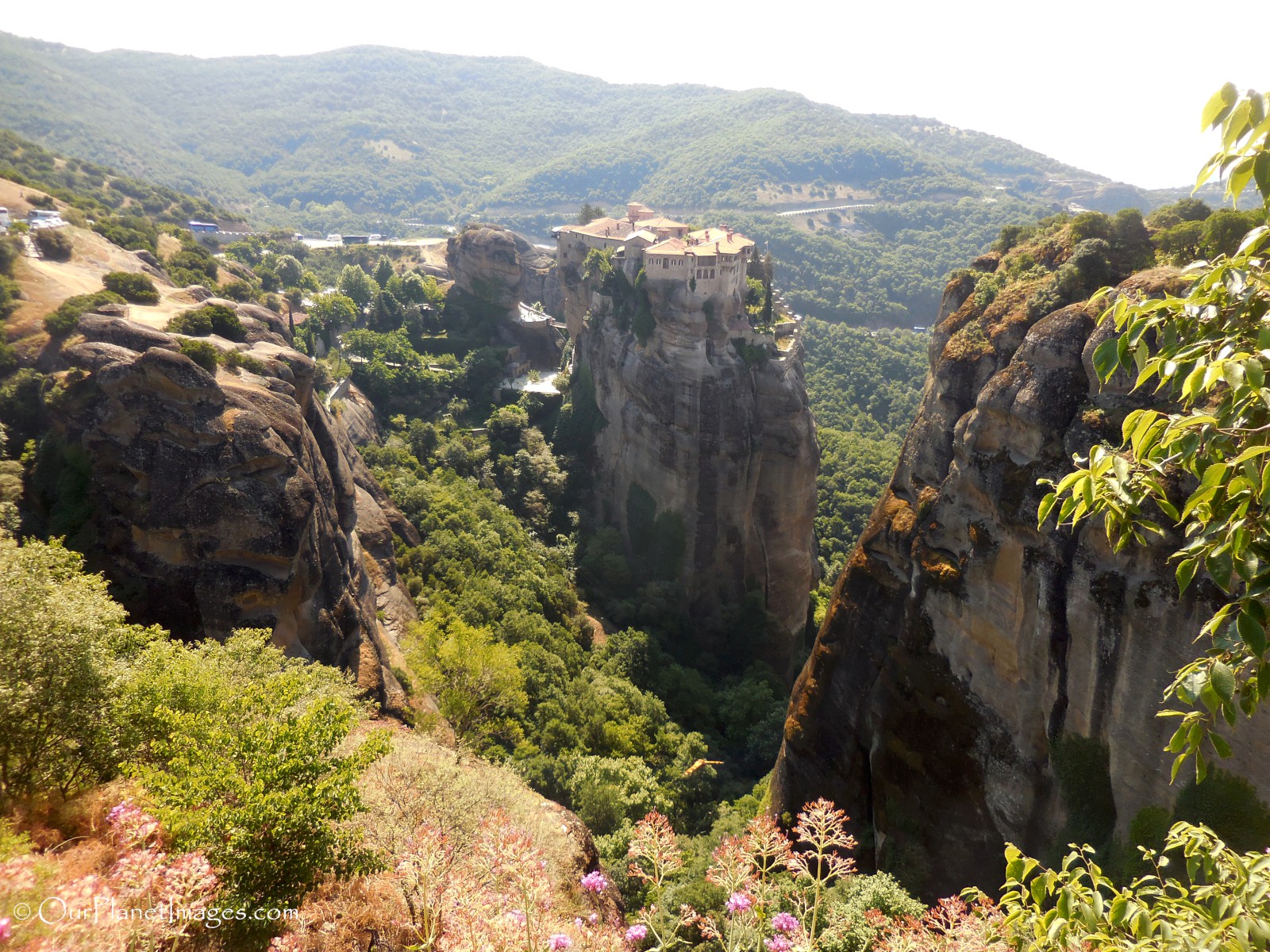
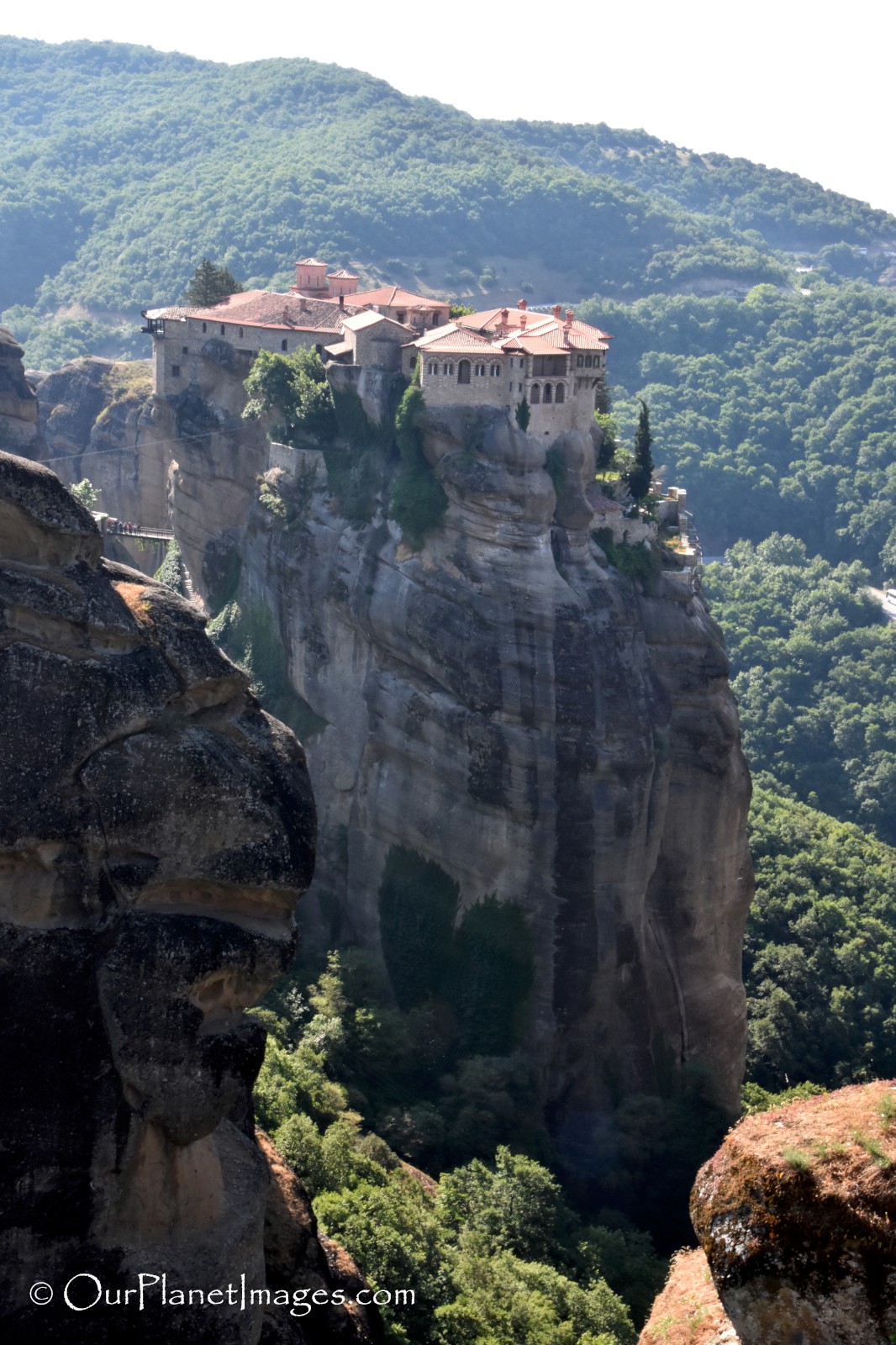
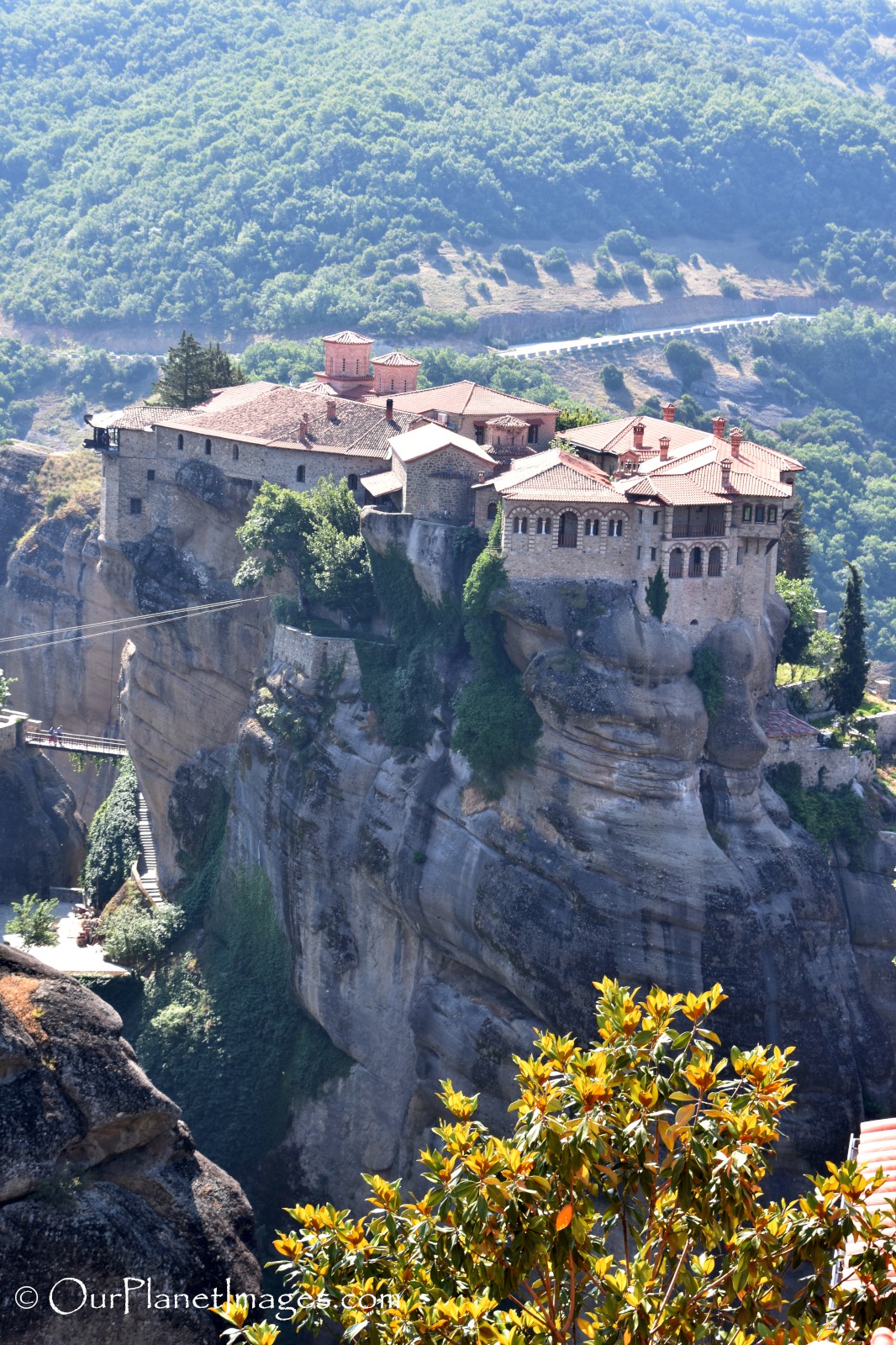
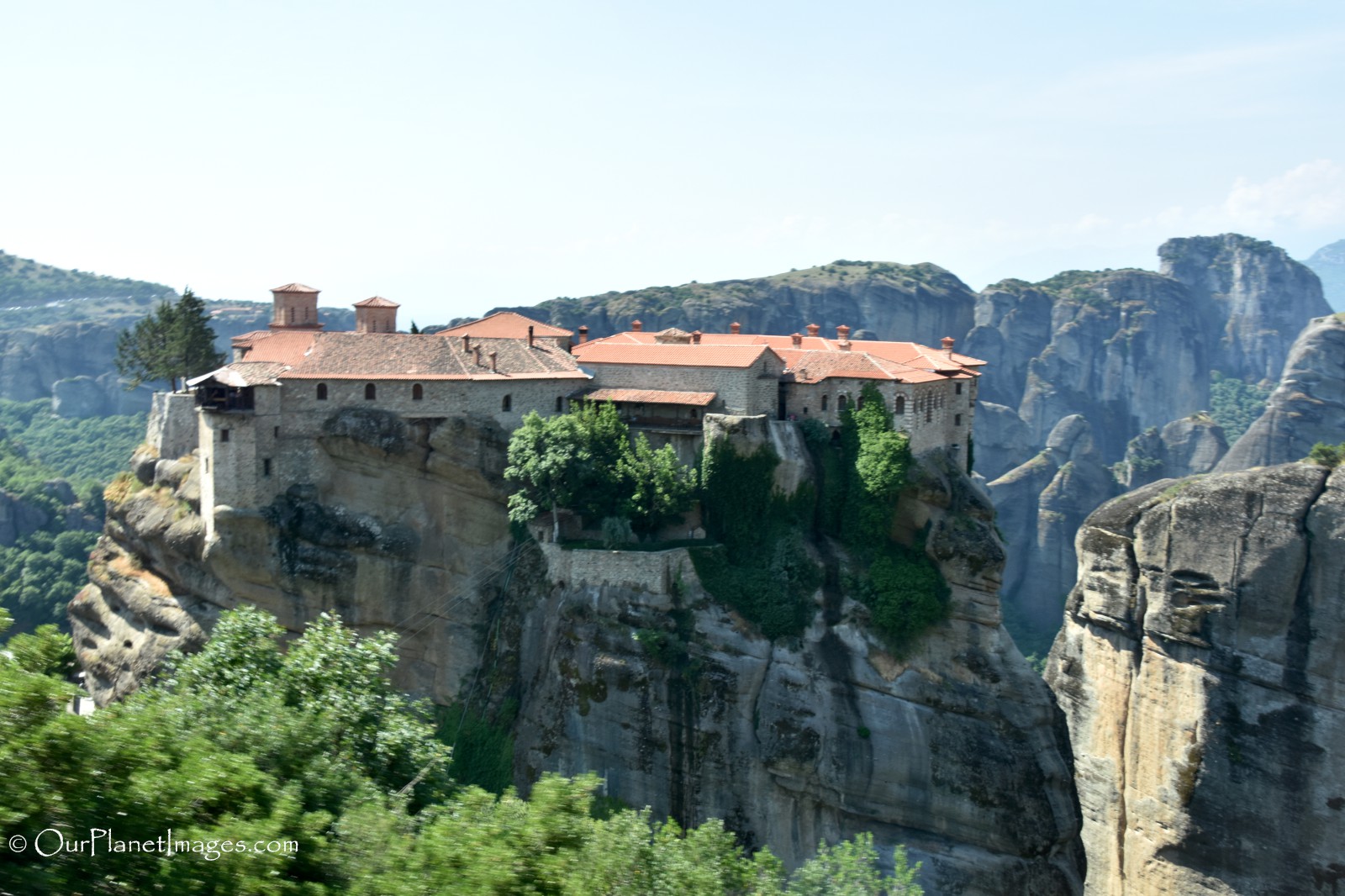
Holy Monastery of Rousanou
This monastery is the lowest of the six monasteries and is easy to access across a newly restored bridge. It was built in 1560 and became a nunnery in 1988. The notable feature of this monastery are the flower gardens and courtyard.
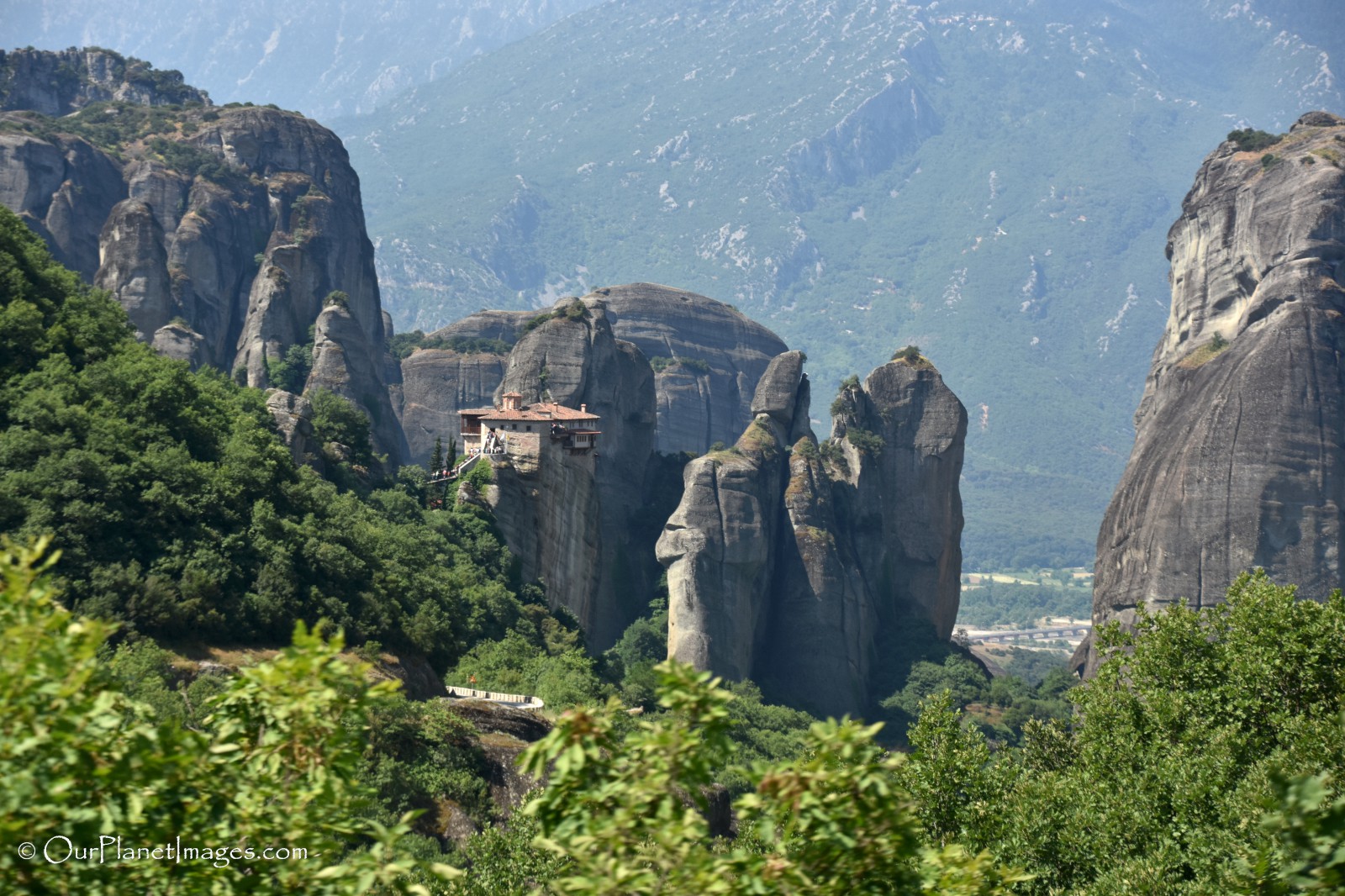
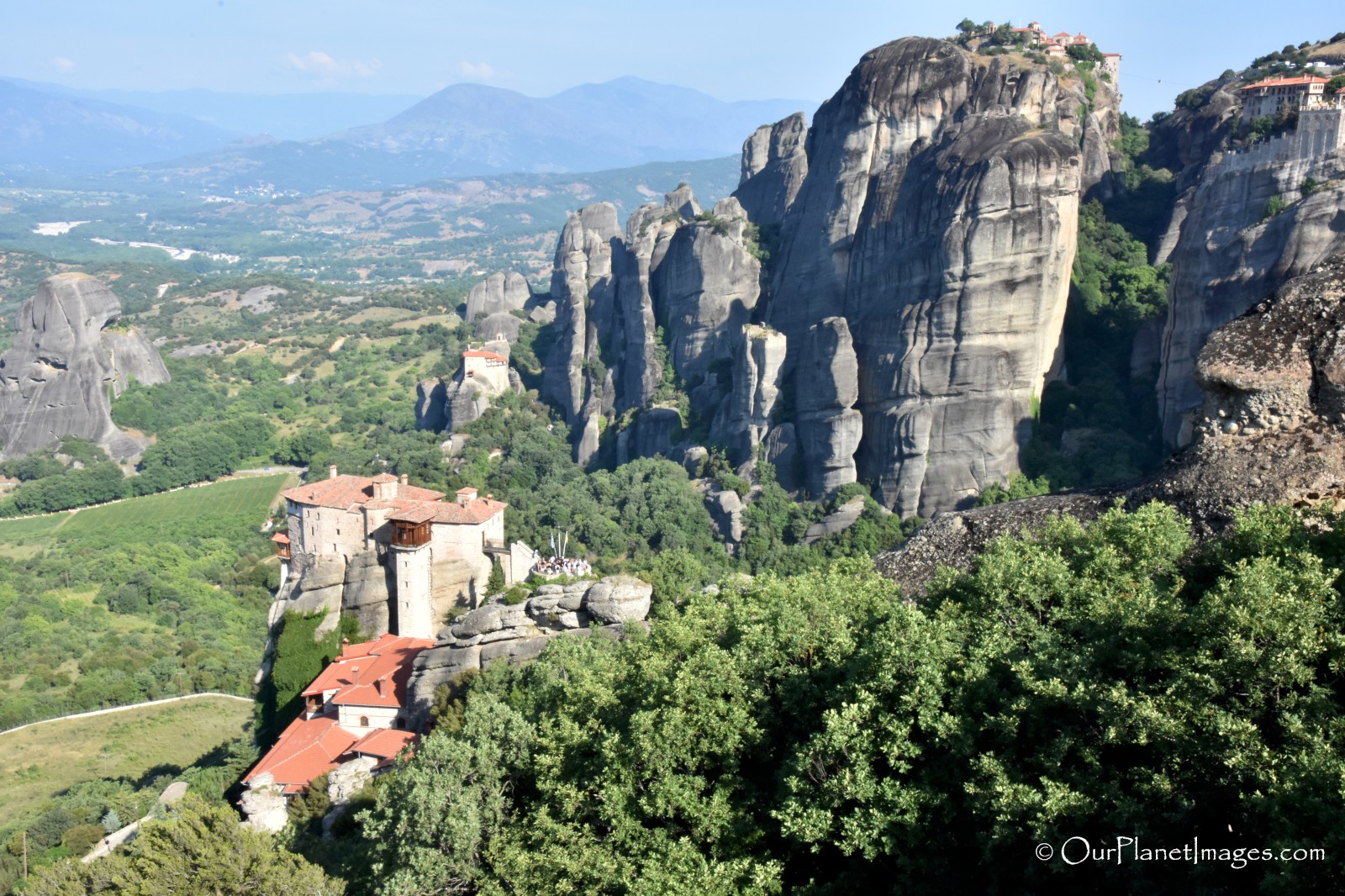
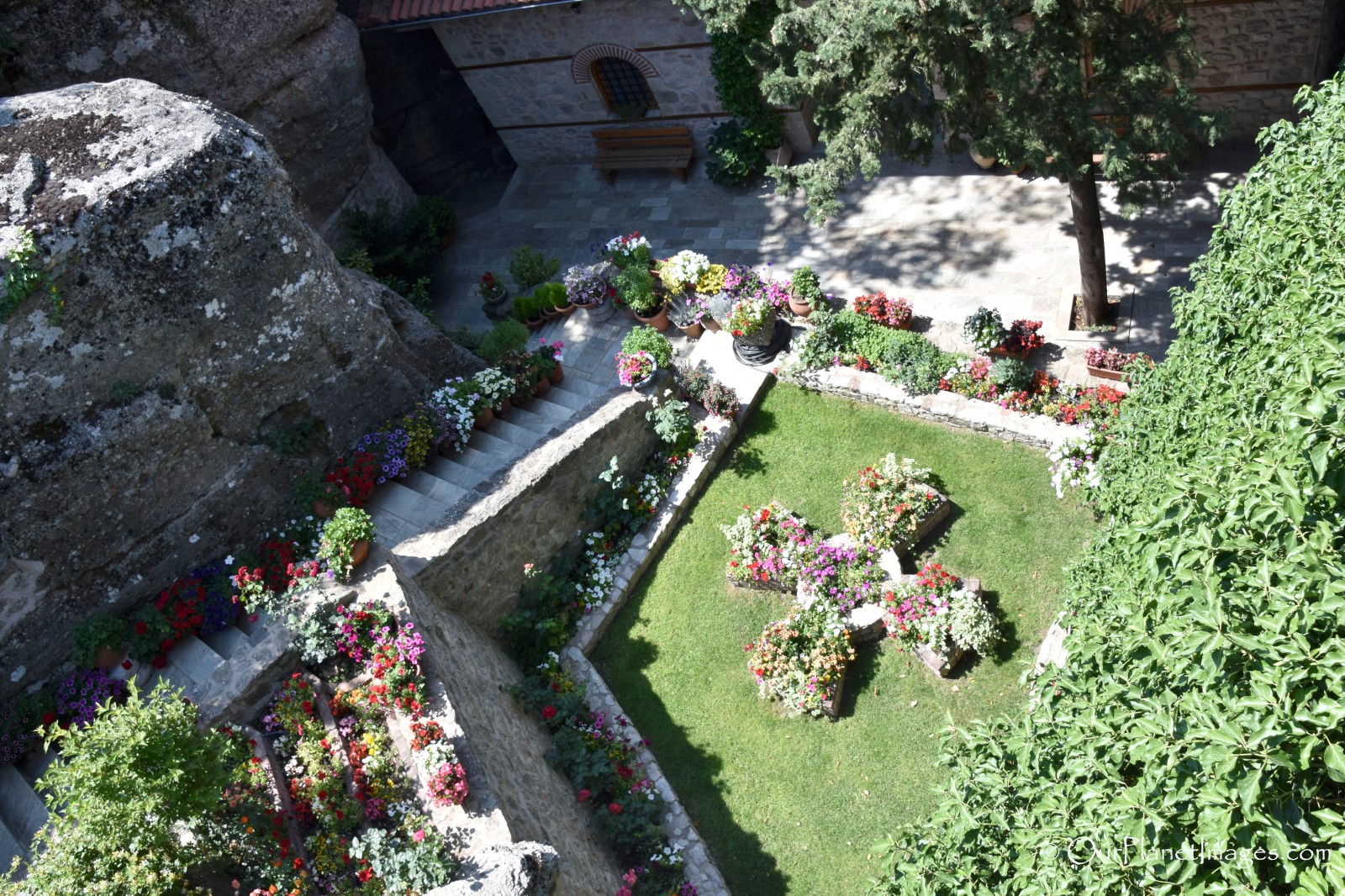

Holy Trinity Monastery
This monastery was built in 1475 and is perhaps the most difficult to reach requiring visitors to descend 140 steps down a canyon then climb up another 140 steps to the compound entrance. This monastery became famous when it was featured as a setting in the 1981 James Bond movie “For Your Eyes Only”.
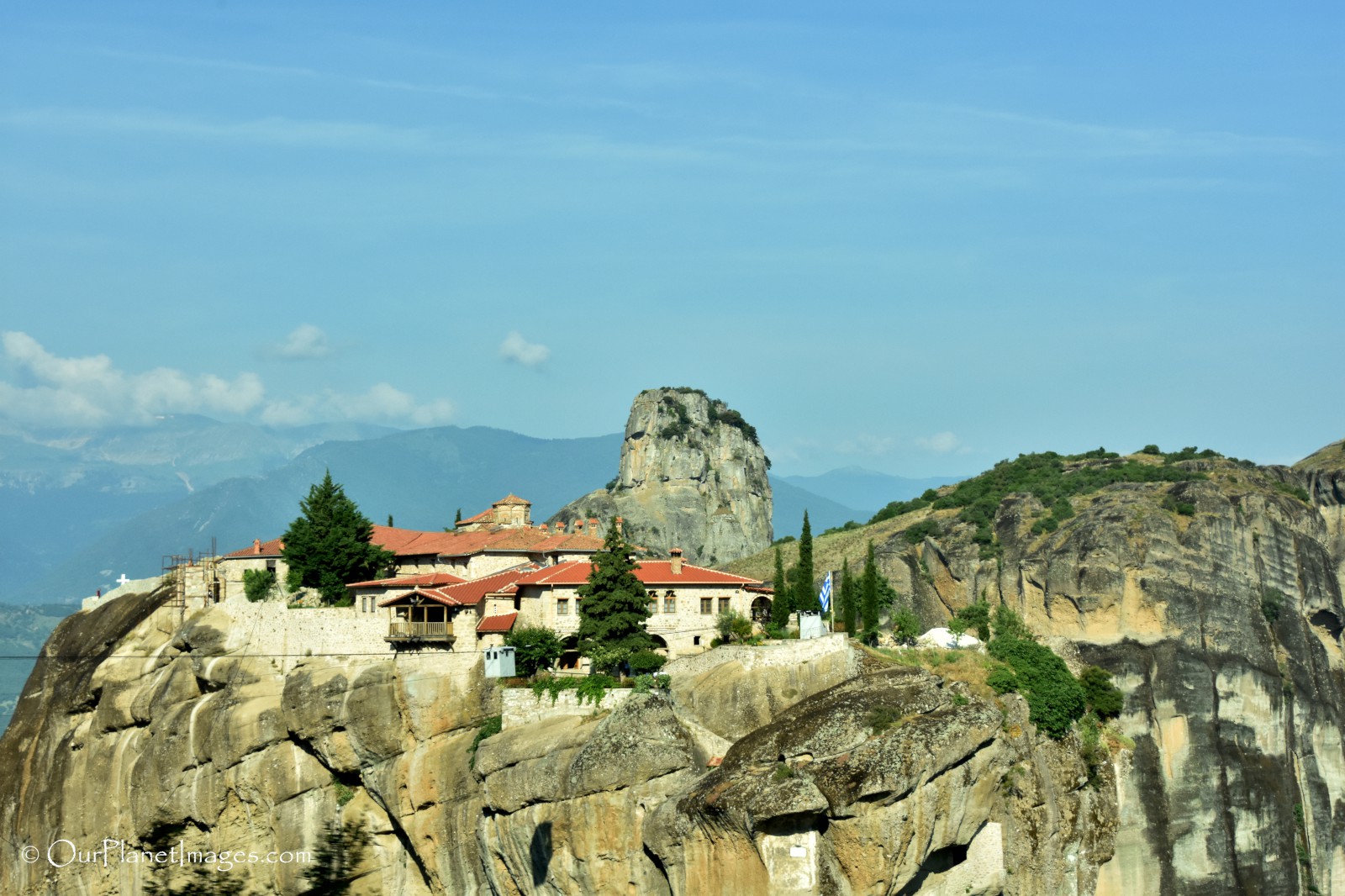
At the Monasteries
The walls of the chapels in the monasteries are decorated with paintings that represent stories from the Bible. These painting are really overwhelming as they completely cover the entire chapel and they are were obviously from hundreds of years ago. It was very disappointing that I could not photograph the chapels but there is a policy of no photos allowed inside the chapels.
Outside the chapels photograph is allowed so I have included a few photos from the outside building.

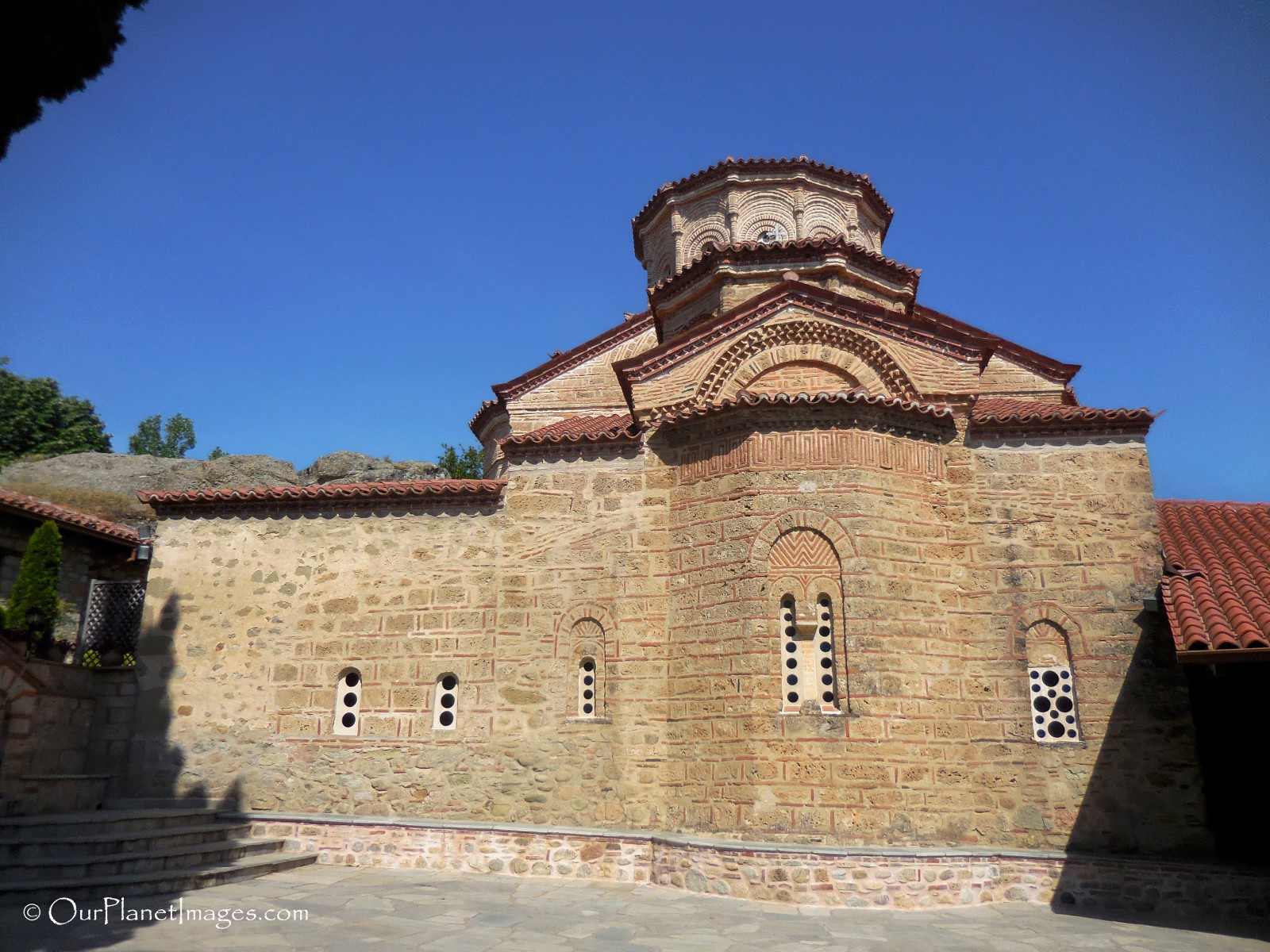
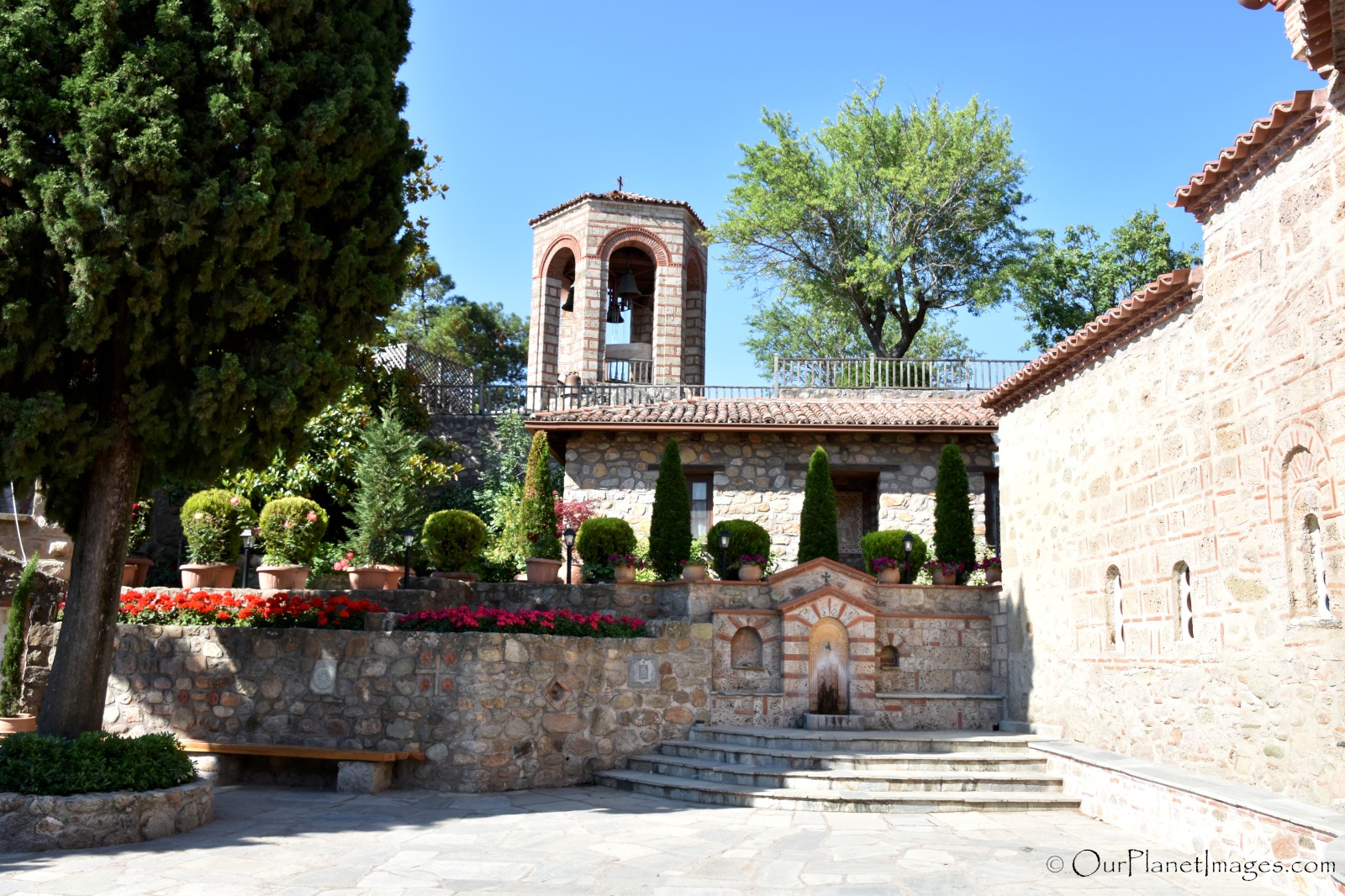

The photos below were on the outside of building and provide a hint of the type of painting inside the chapels but the art inside the chapels are better preserved and more detailed.


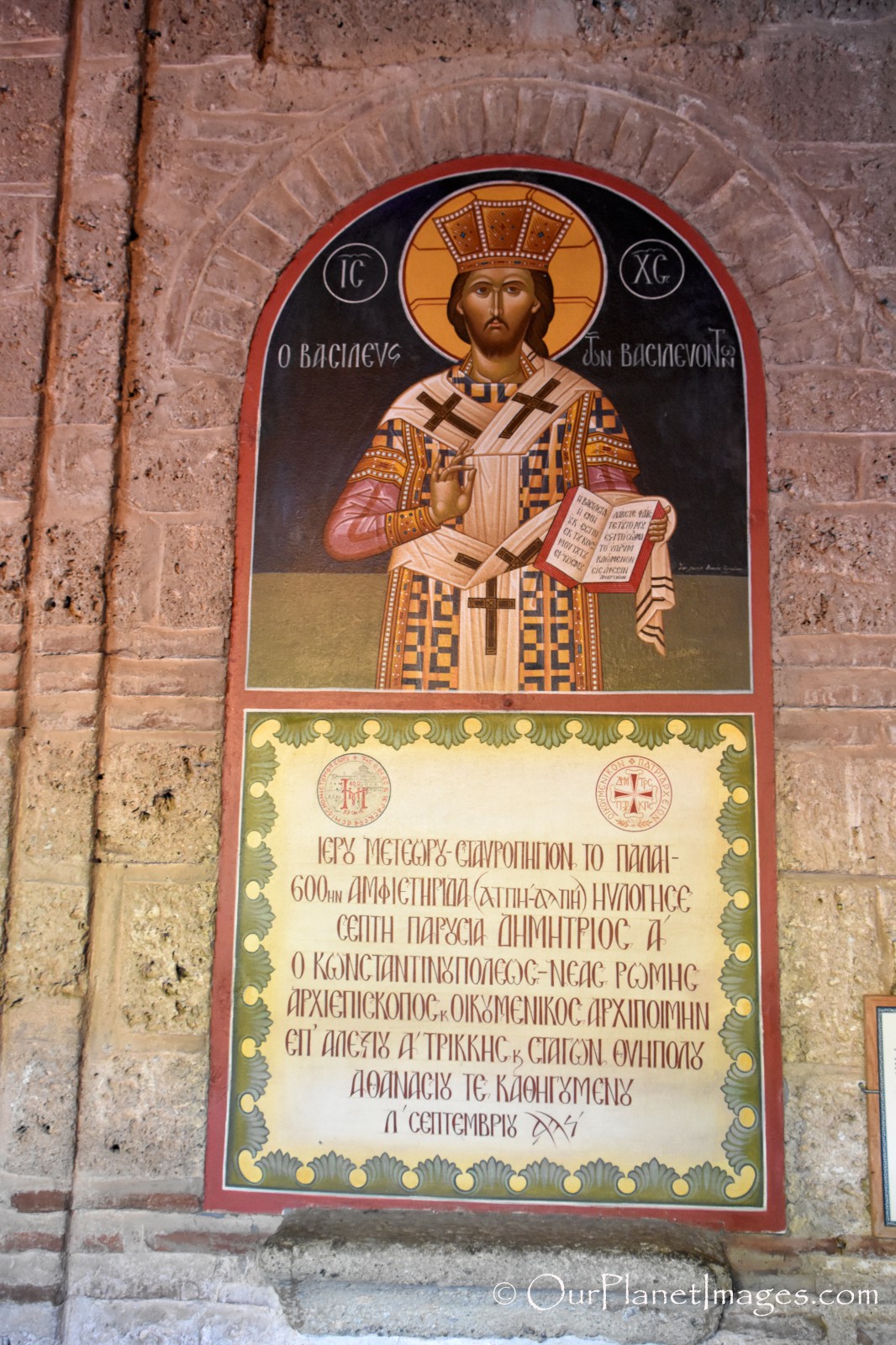
Towering Sandstone Pillars
The Monasteries are famous because they are built on top of towering sandstone pillars but there are many pillars that are completely natural. The scenery around the monasteries is truly beautiful. The photos below were taken from the monasteries and shows the view looking outward from the monasteries.
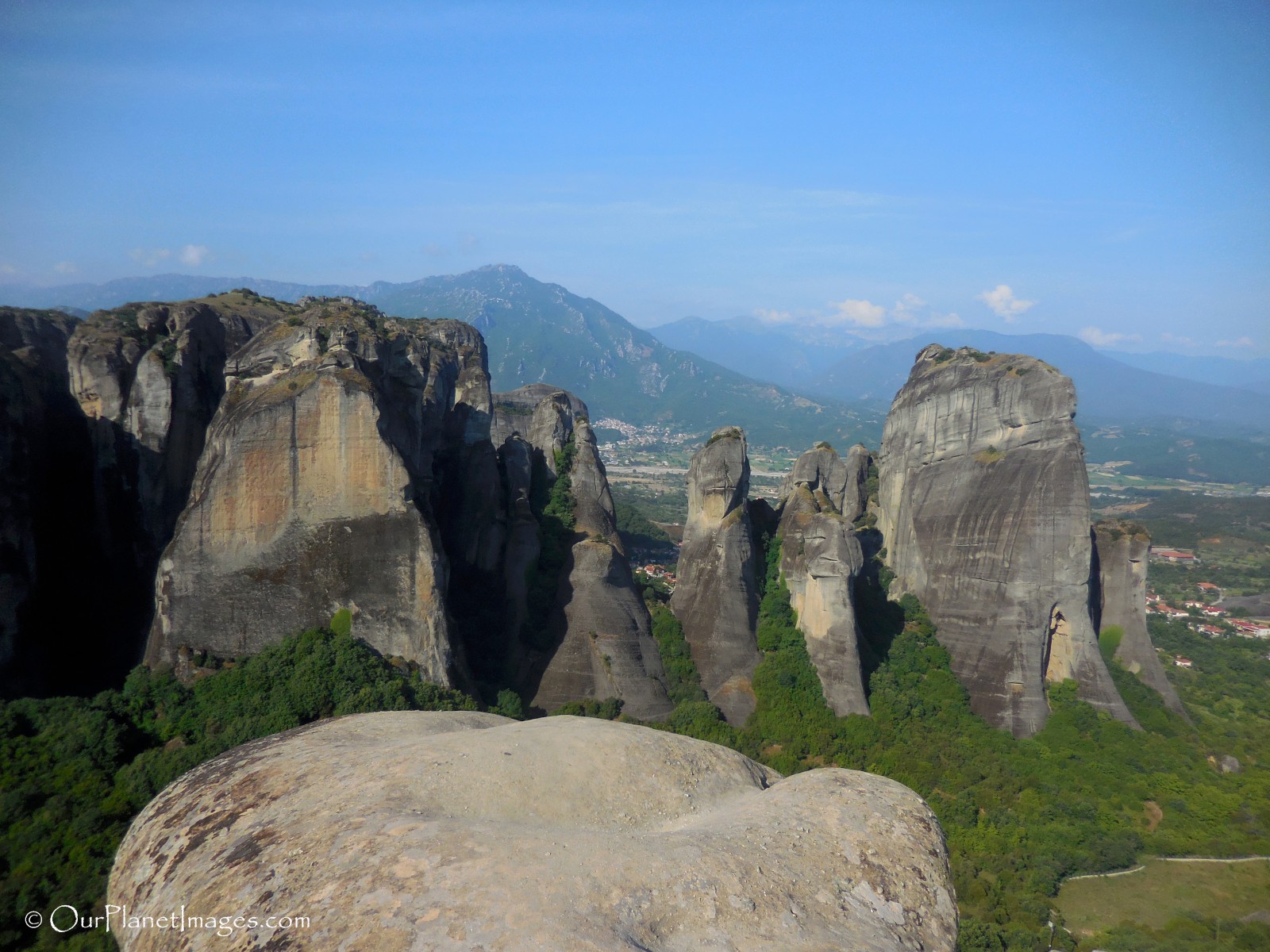
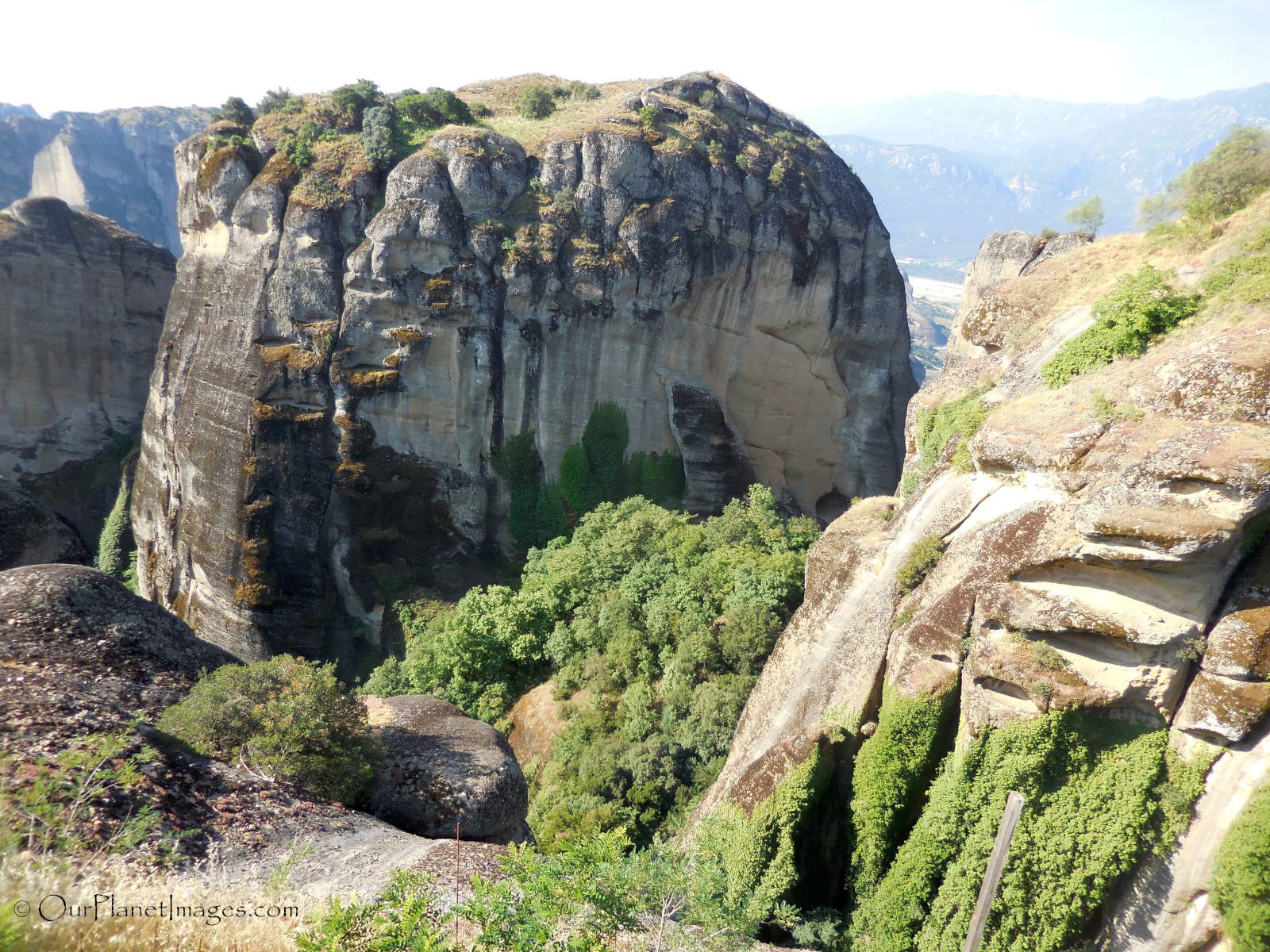
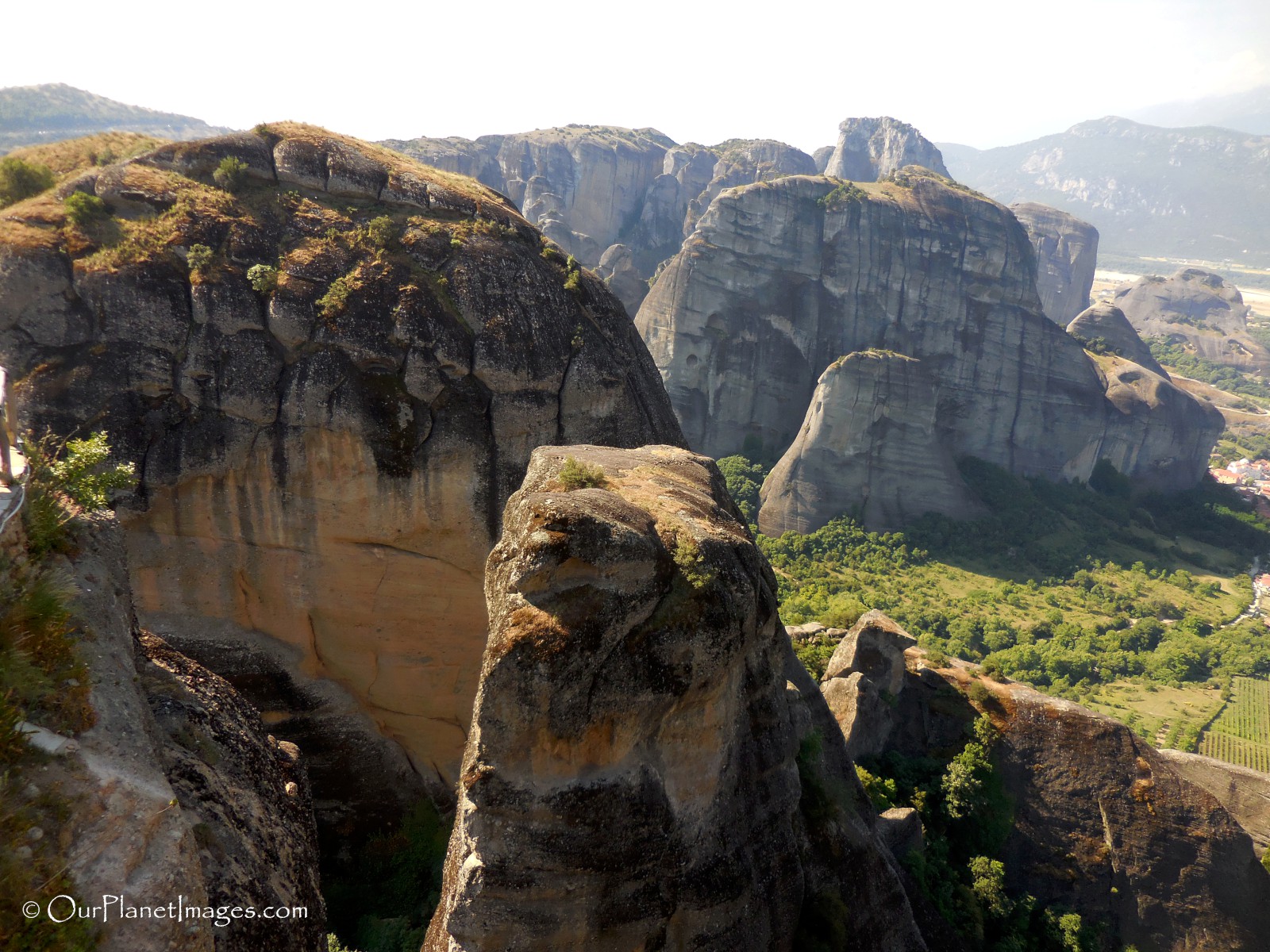
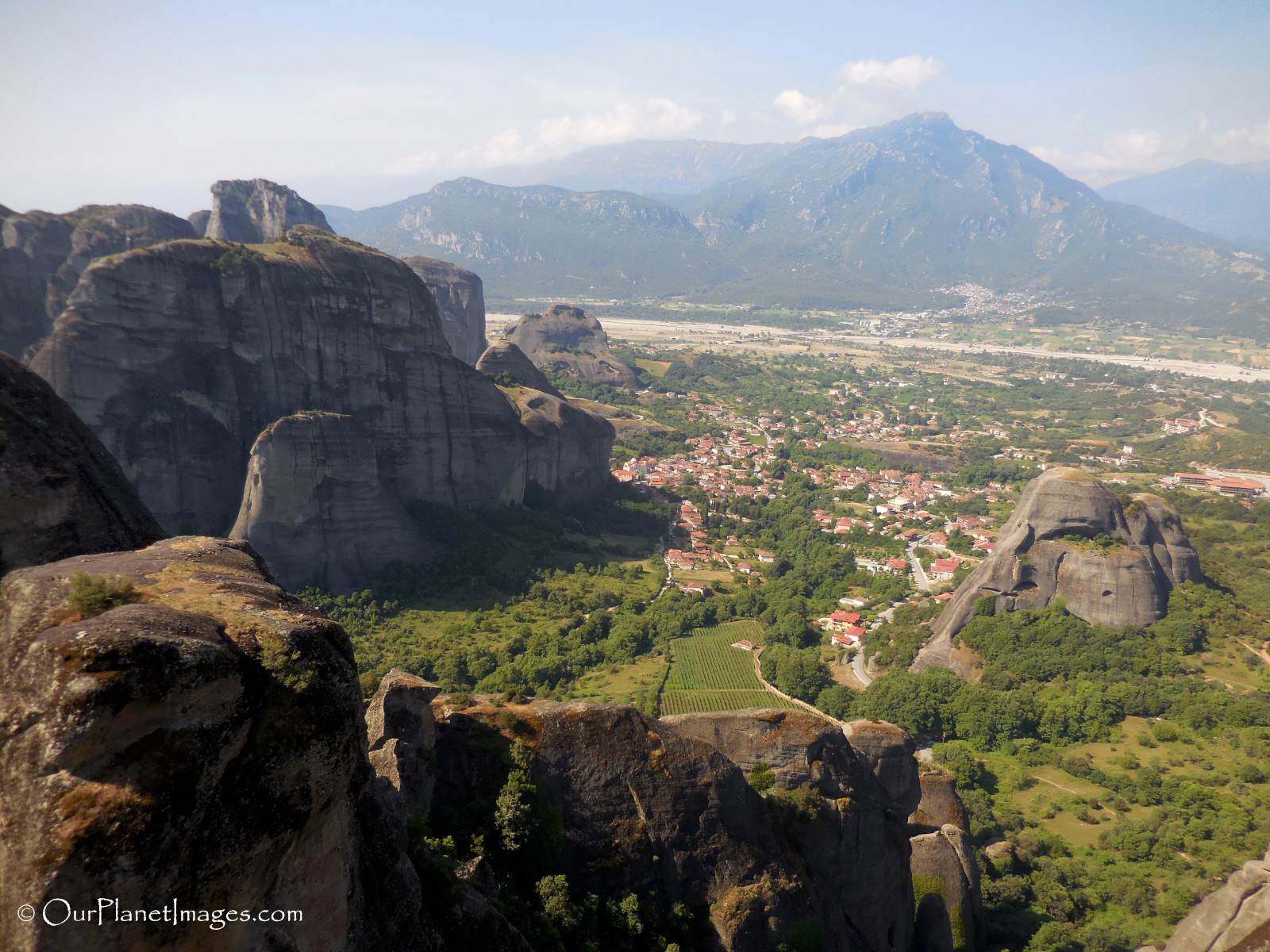
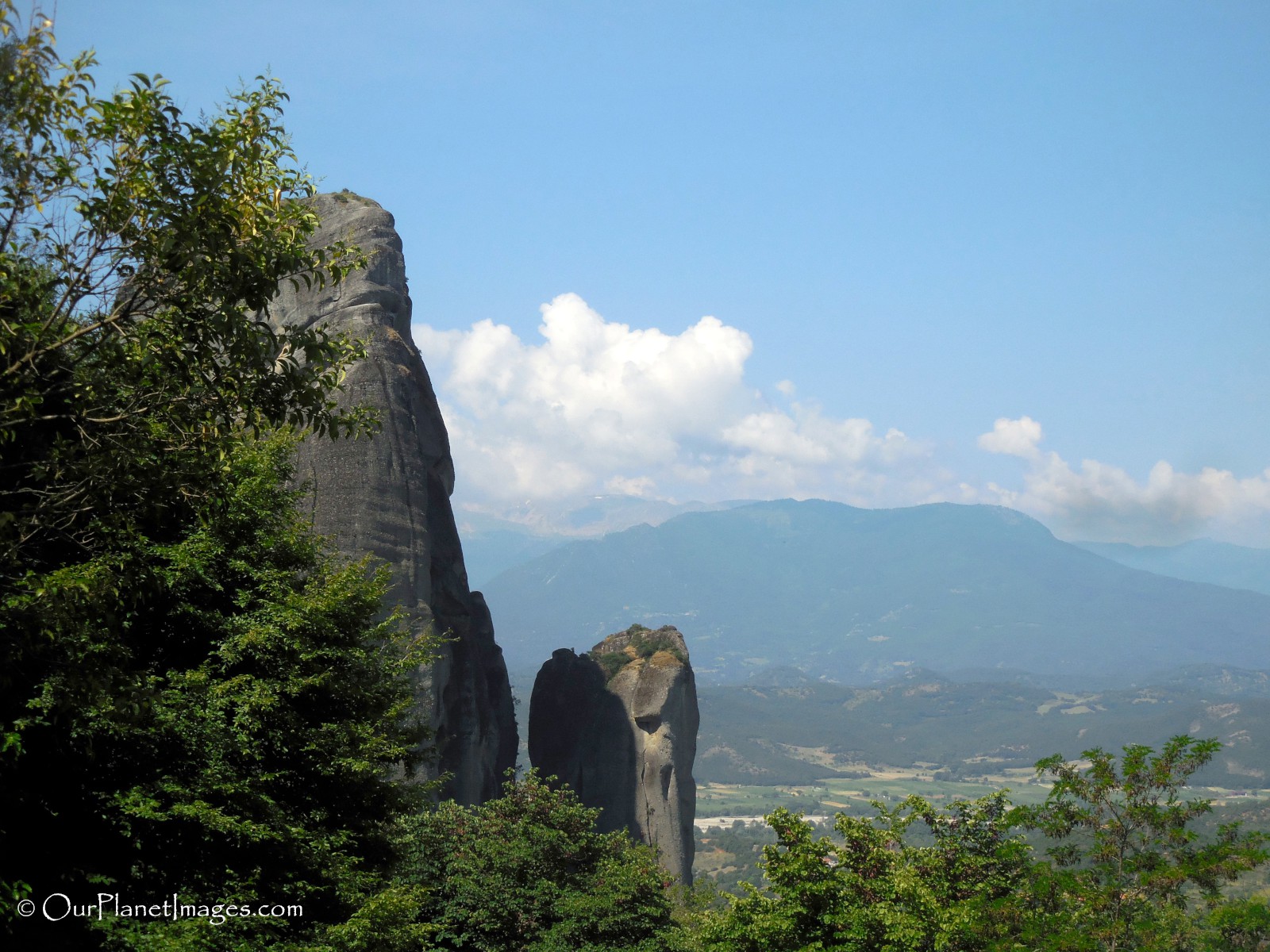
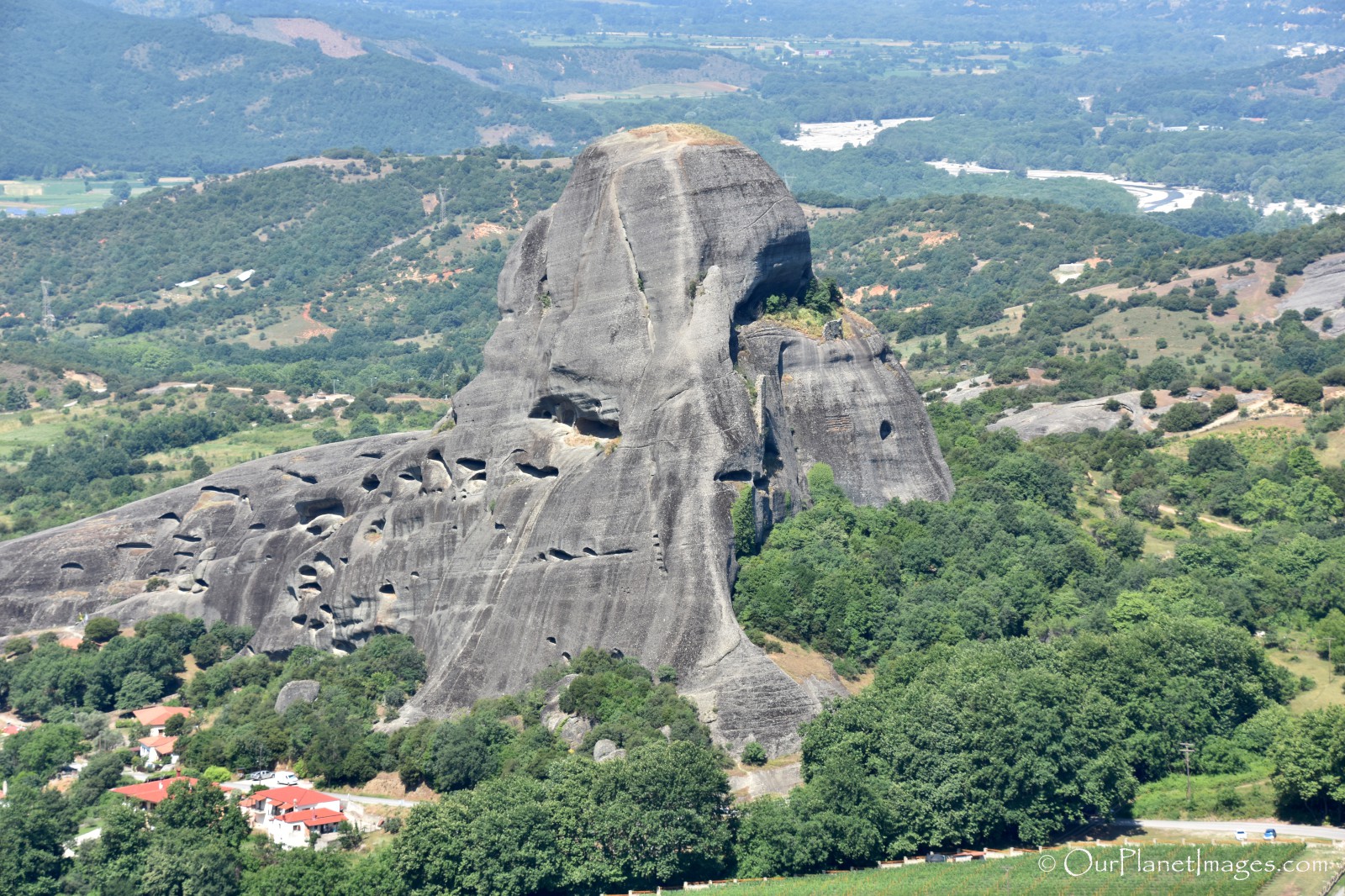
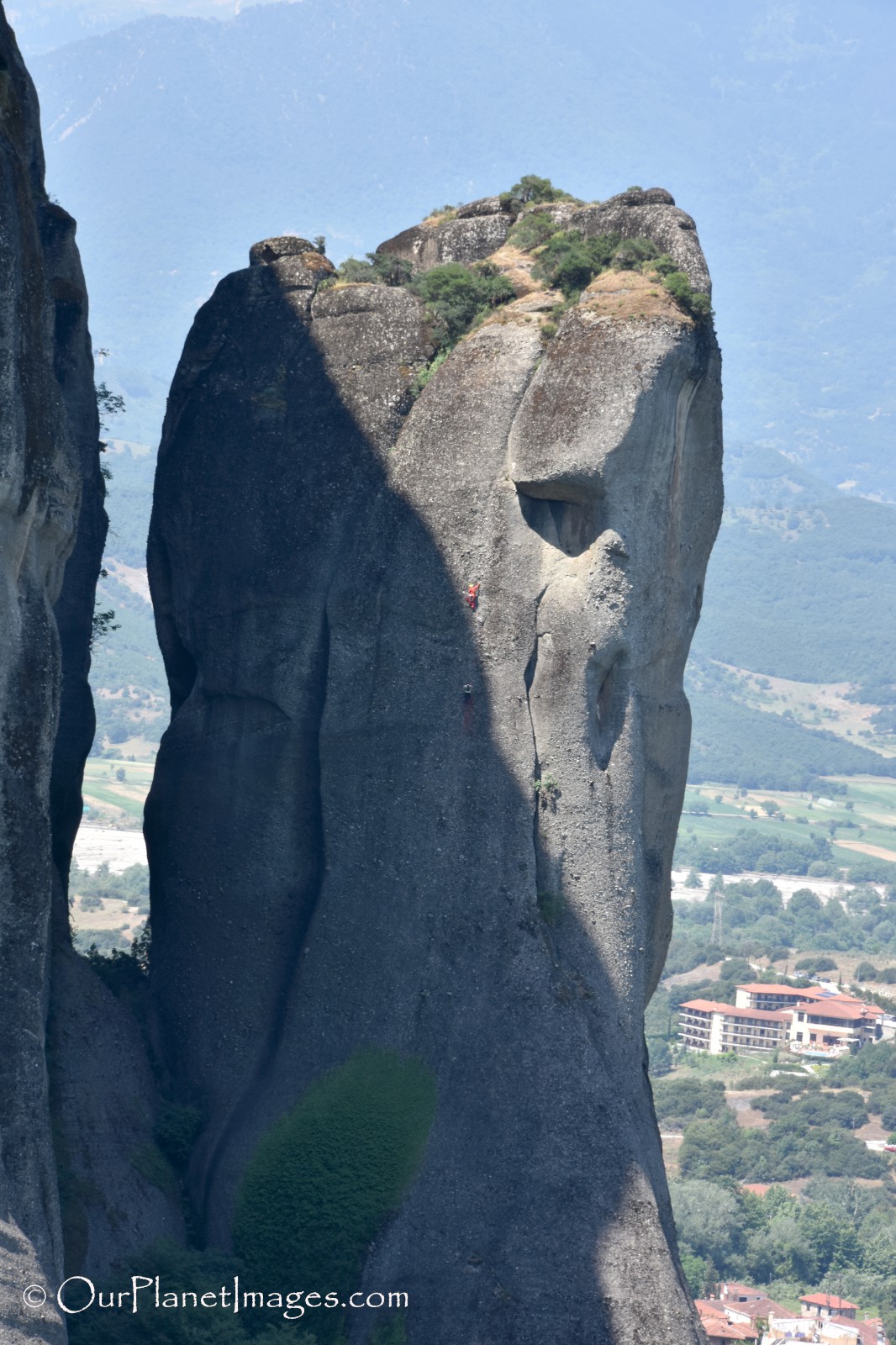
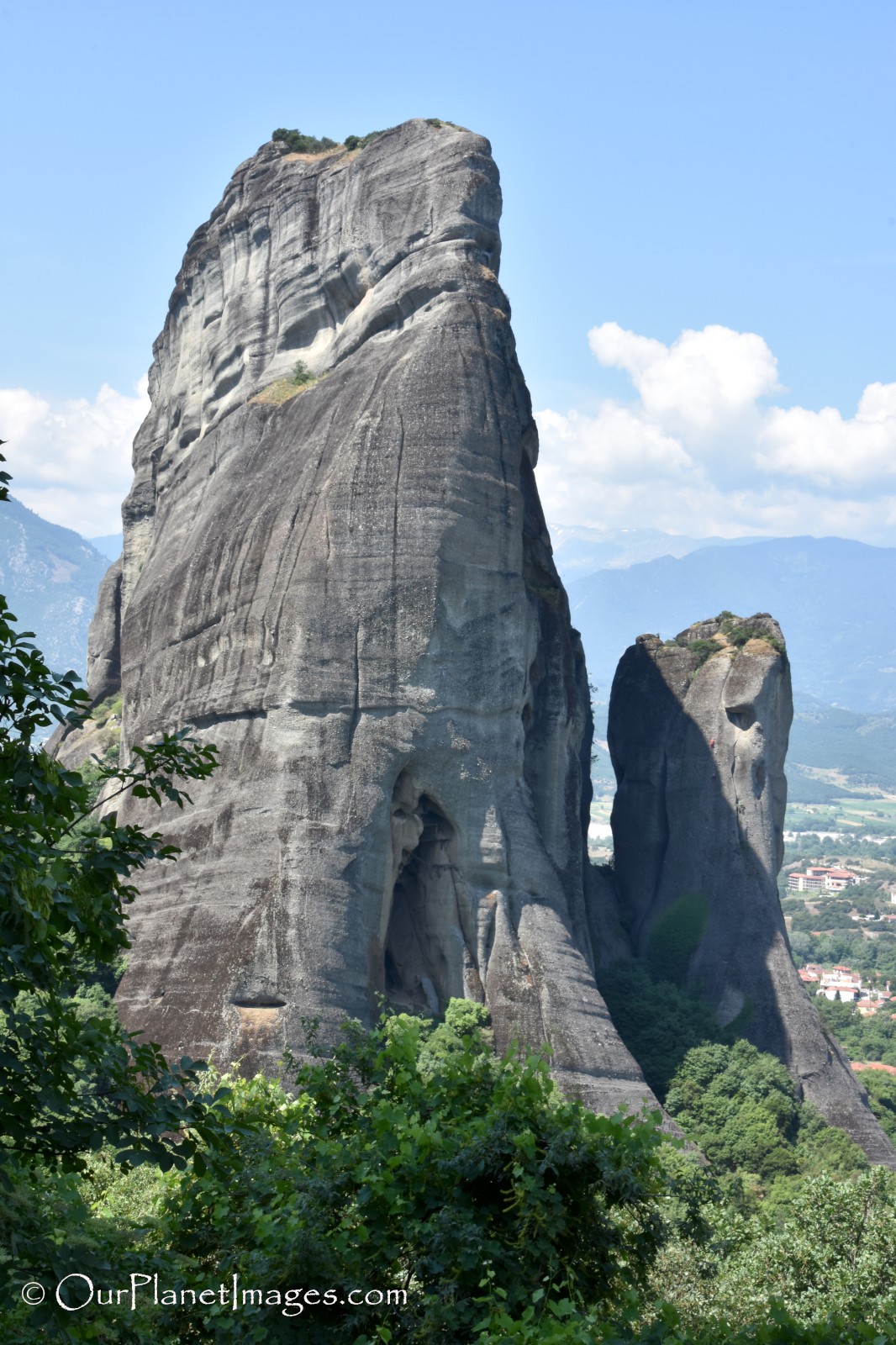

An area near the Monastery of Rousanou had smaller sandstone formations but they were also very picturesque. The photos below show this area.


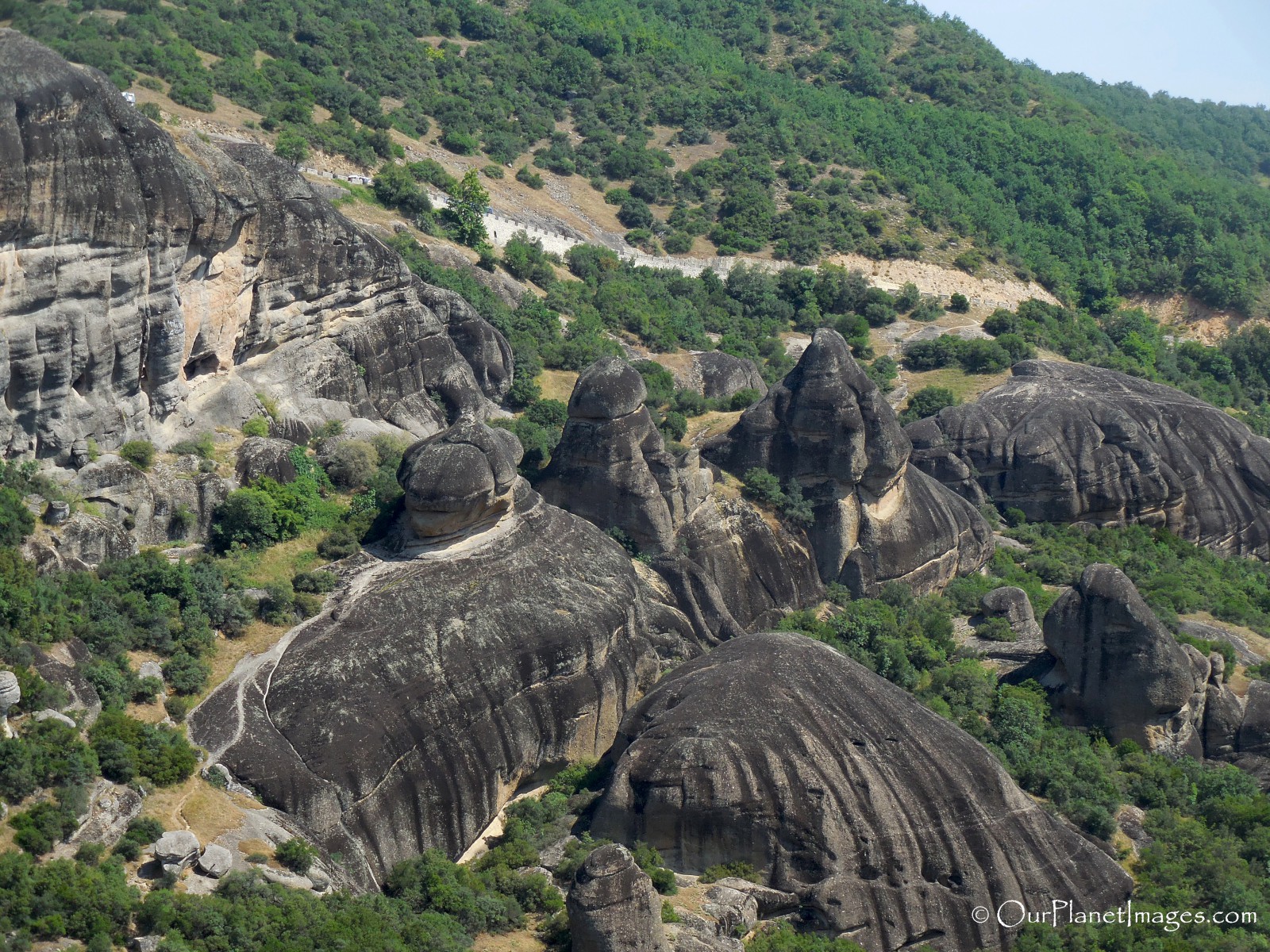
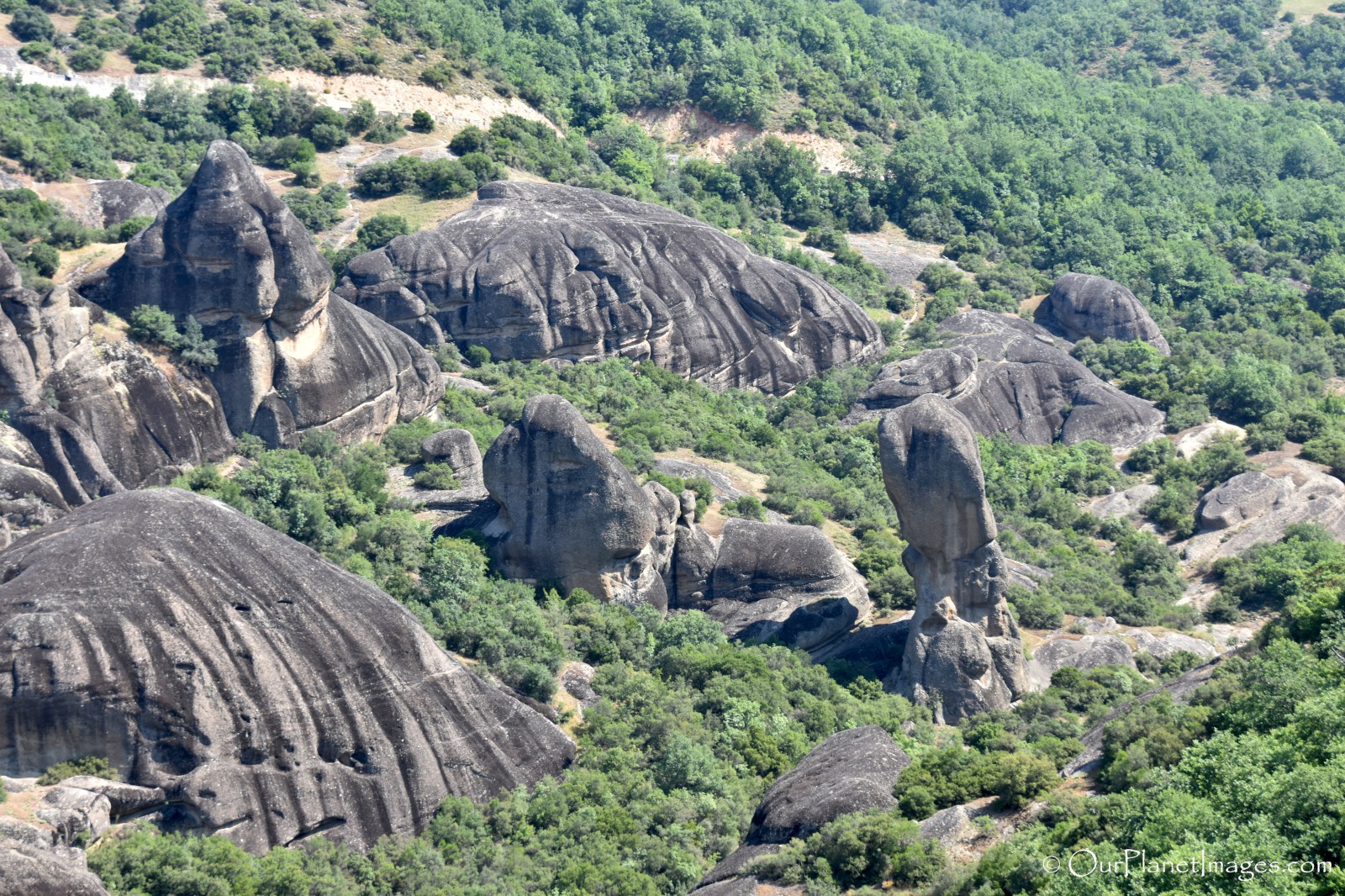
The Dust on My Shoes
Visiting the Monasteries at Meteora is like going three sites at the same time.
The construction of the monasteries on top of the steep towering pillars is a manmade wonder. Looking across the valley and see the monasteries setting on top of sheer rock cliffs made me say “How could they do that?” Being at the monasteries and looking down to the valley floor made me say “How could they do this?” Truly Amazing!
The inside of the chapels are stunning with the wall to wall paintings that gave me the feeling that I was stepping into a living museum. The chapels don’t look like they have changed in centuries but they are still actively in use.
A majority of the stone pillars are still in their natural state and this area is a natural wonder. These stone formations are very unusual rock formations and are unique to this area. Truly beautiful!
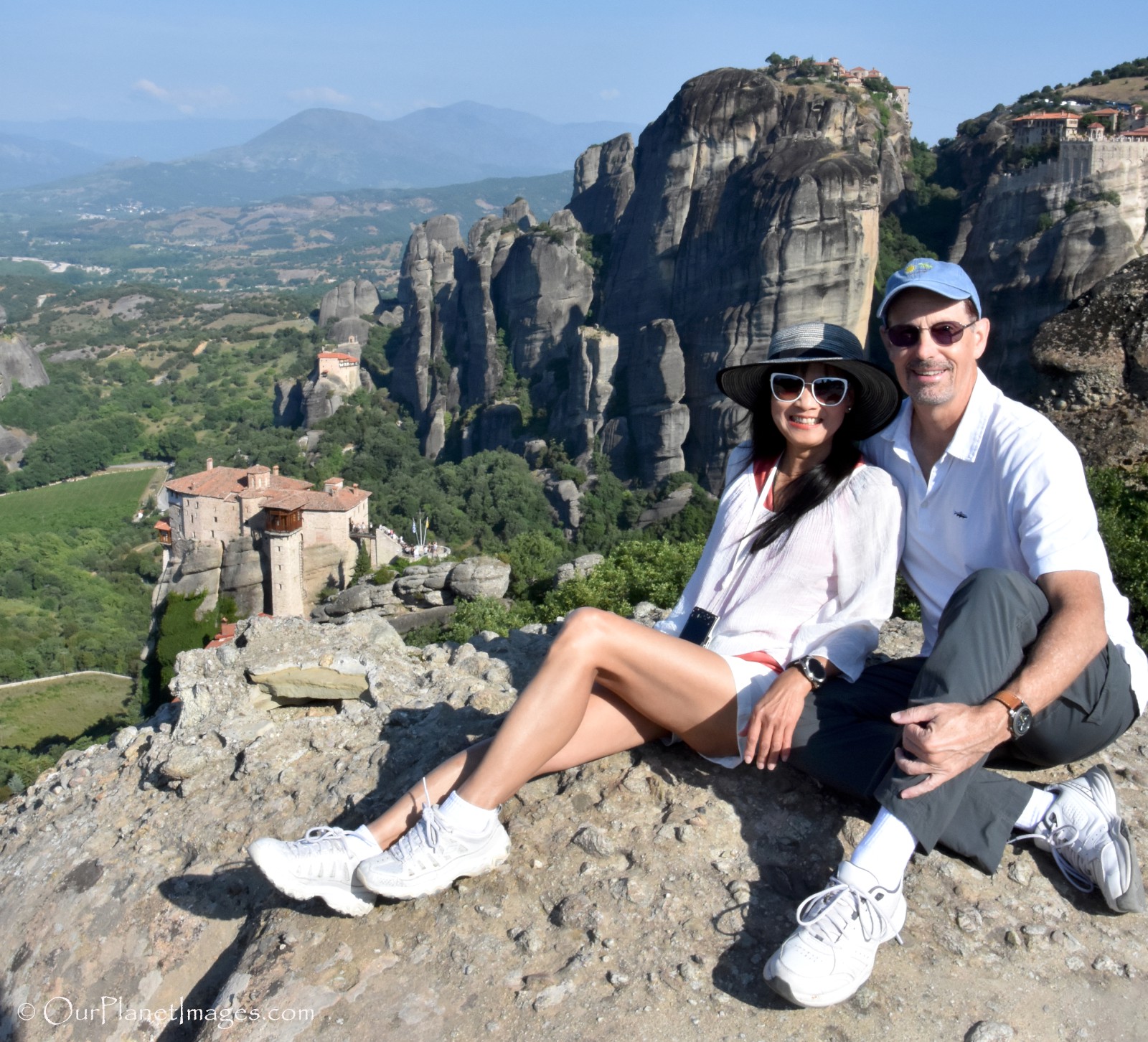
When we visit famous places it is natural for us to focus only on the famous site but many times they are built at that site for a reason. Make sure to appreciate the surroundings when you visit famous places.
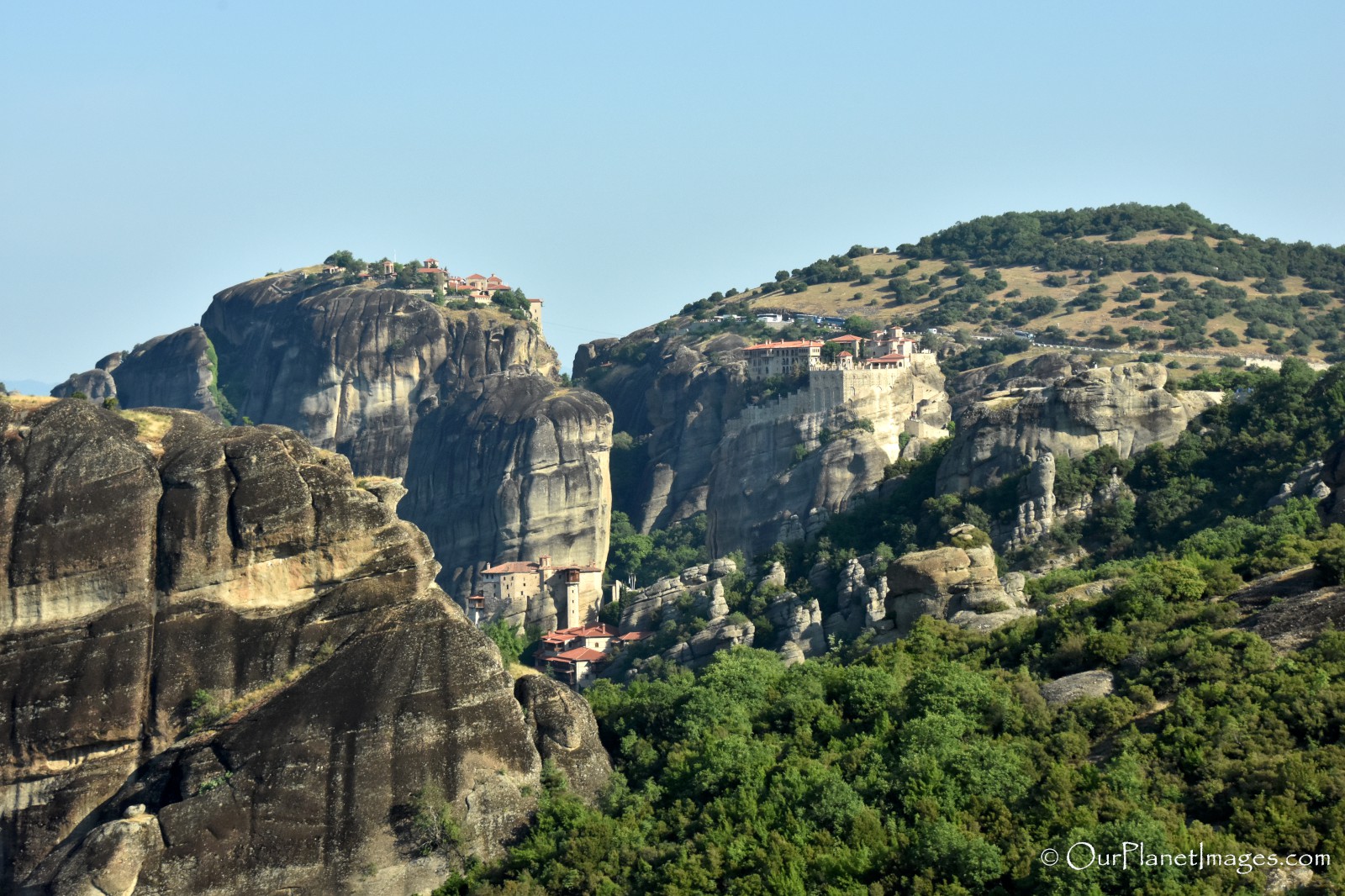
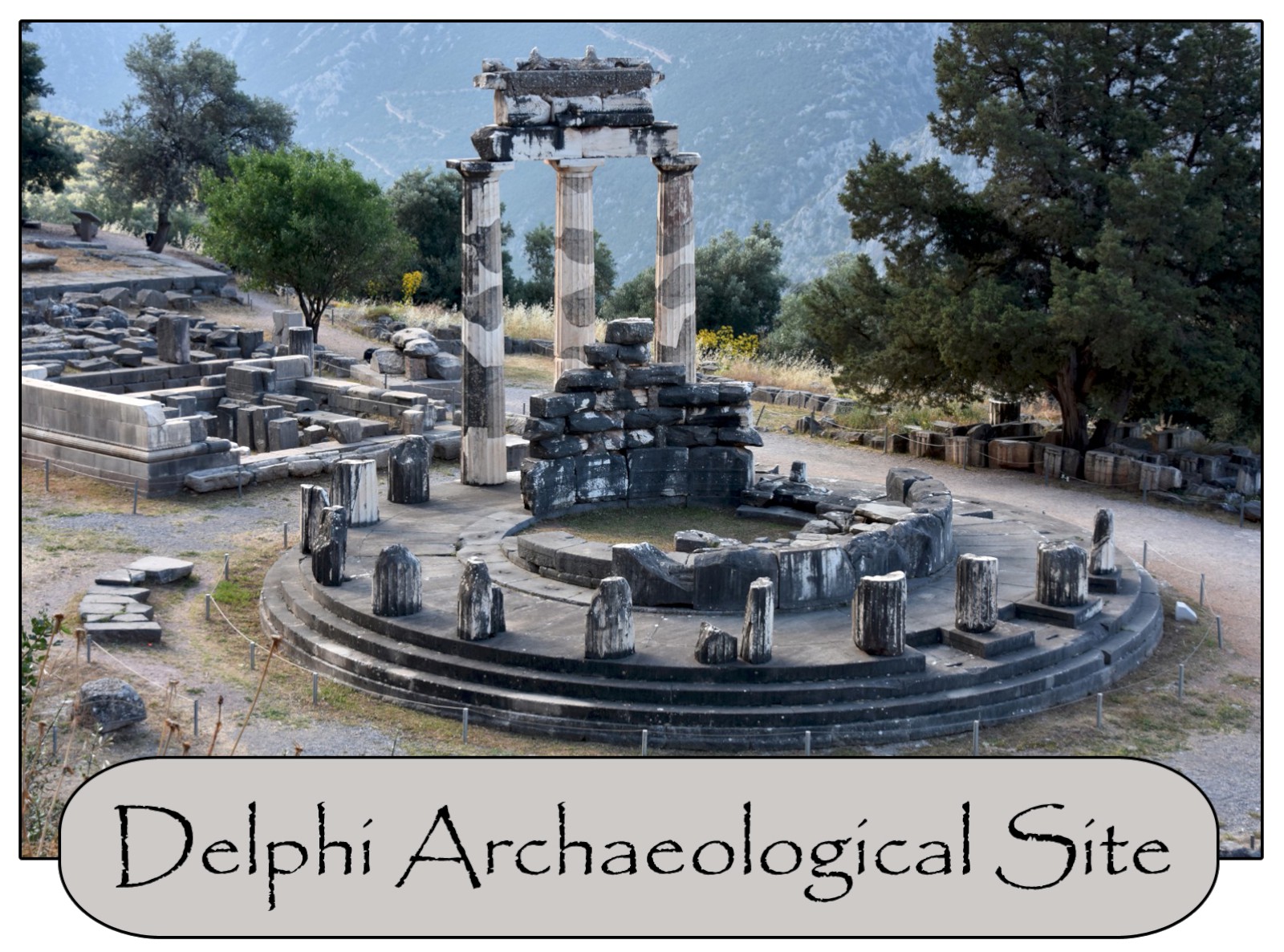
Wow! Truly spectacular!
This is a place that I wanted to see for a long time. It is spectacular and inside the chapels are just as amazing (no photos allowed).
Very cool! Wish they’d let you photograph inside…I’d love to see the interior.
Kevin, I am always disappointed when I am not allowed to photograph something. It is the best way for me to remember the things that I have seen. Although I can’t remember all of the details, I vividly remember the inside being something that you would expect from a hundreds of years ago.
Super cool!
Thanks Carol! This is one of those places that you look at it with amazement.
This is amazing. Beautiful historical places. Fantastic photography and info on the monasteries. This is awesome.
Thanks Ashoak! I am glad that you enjoyed the post. It truly is an incredible place.